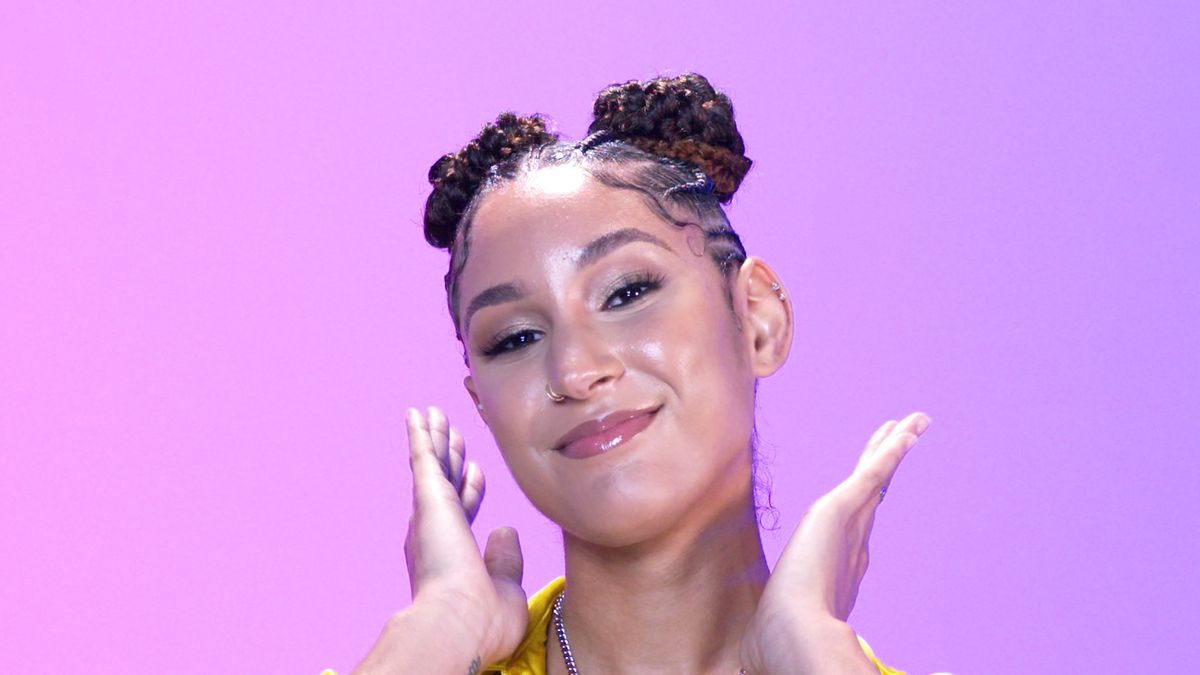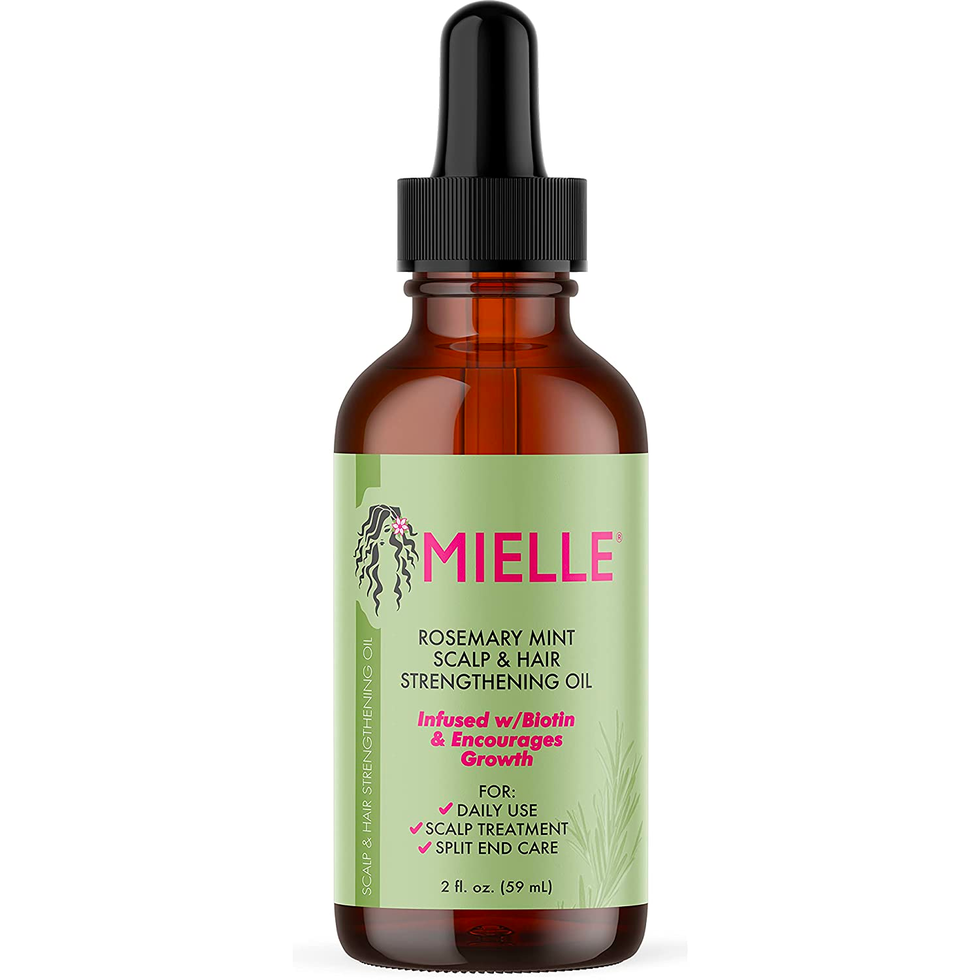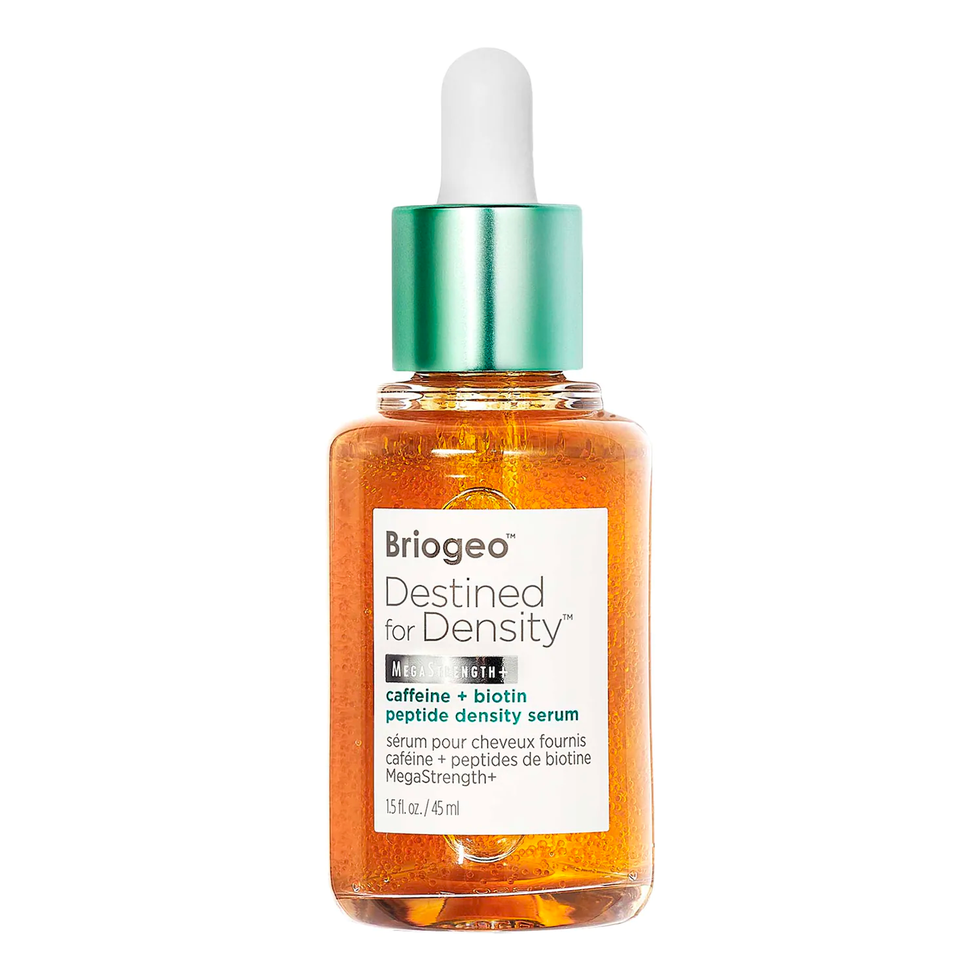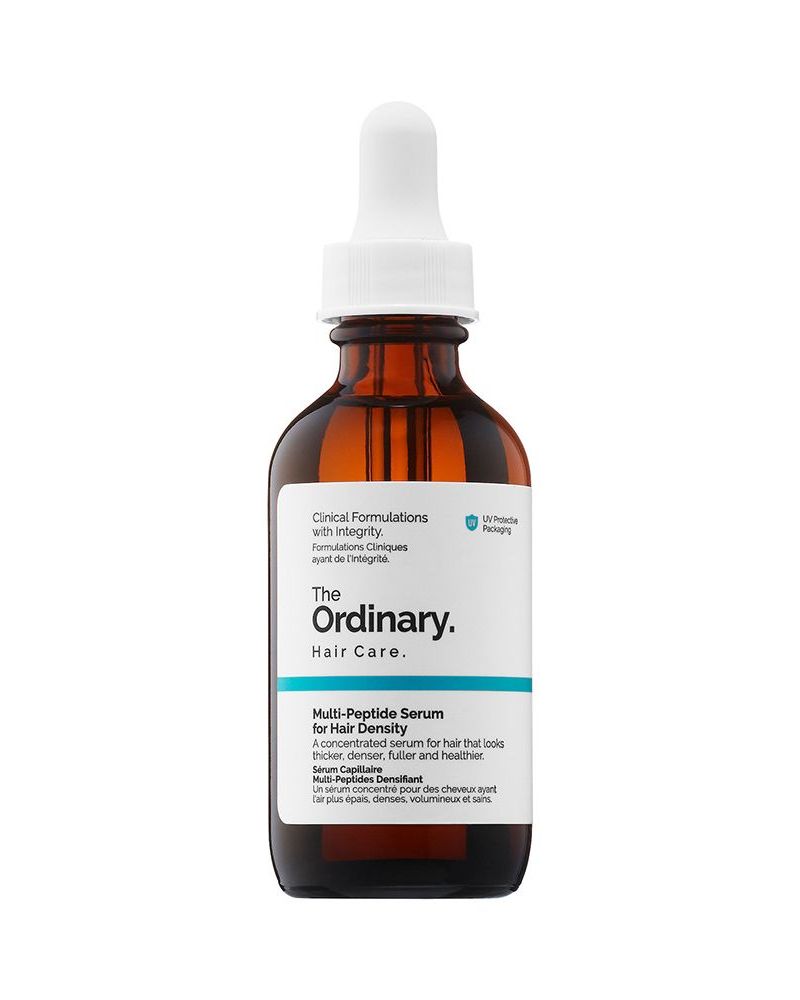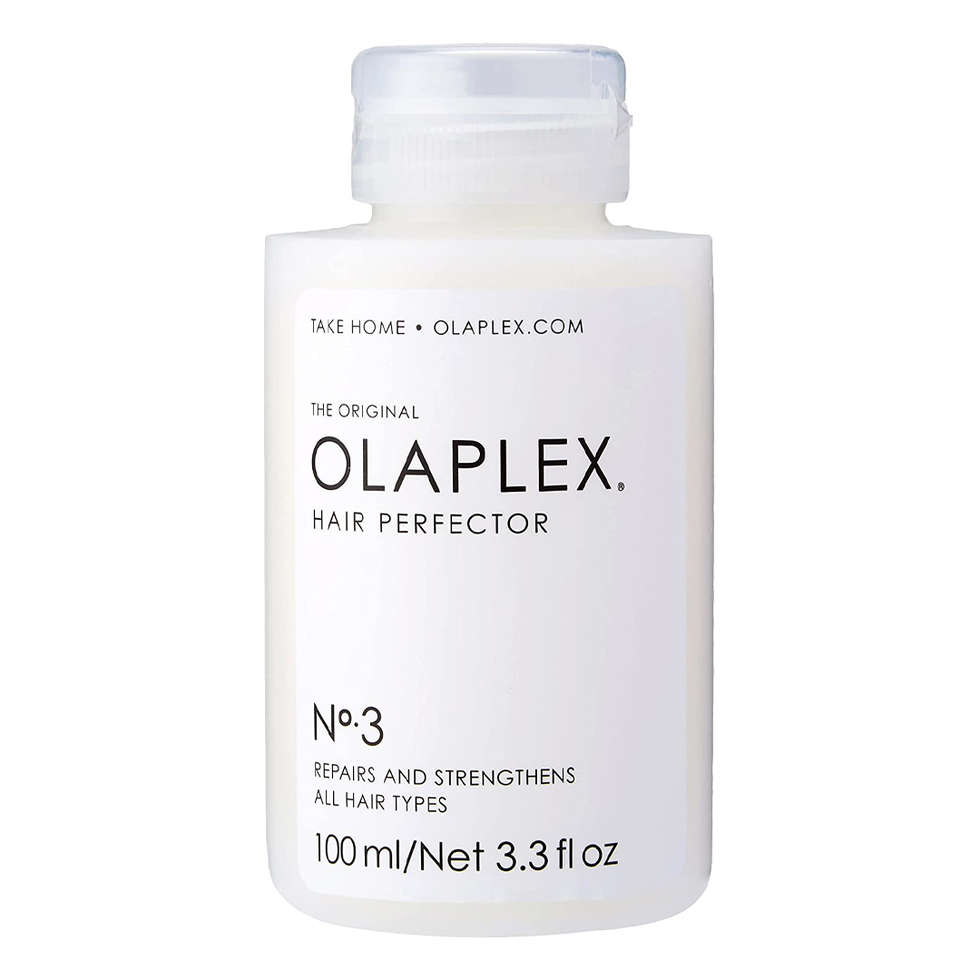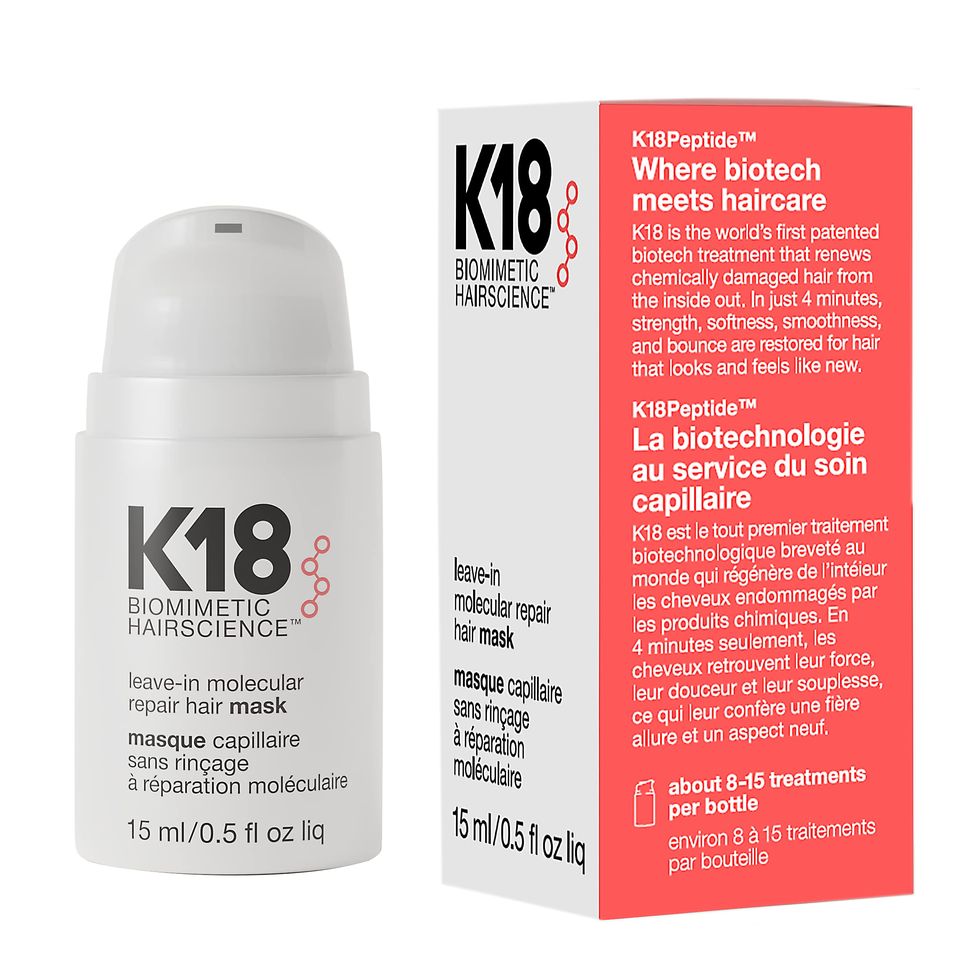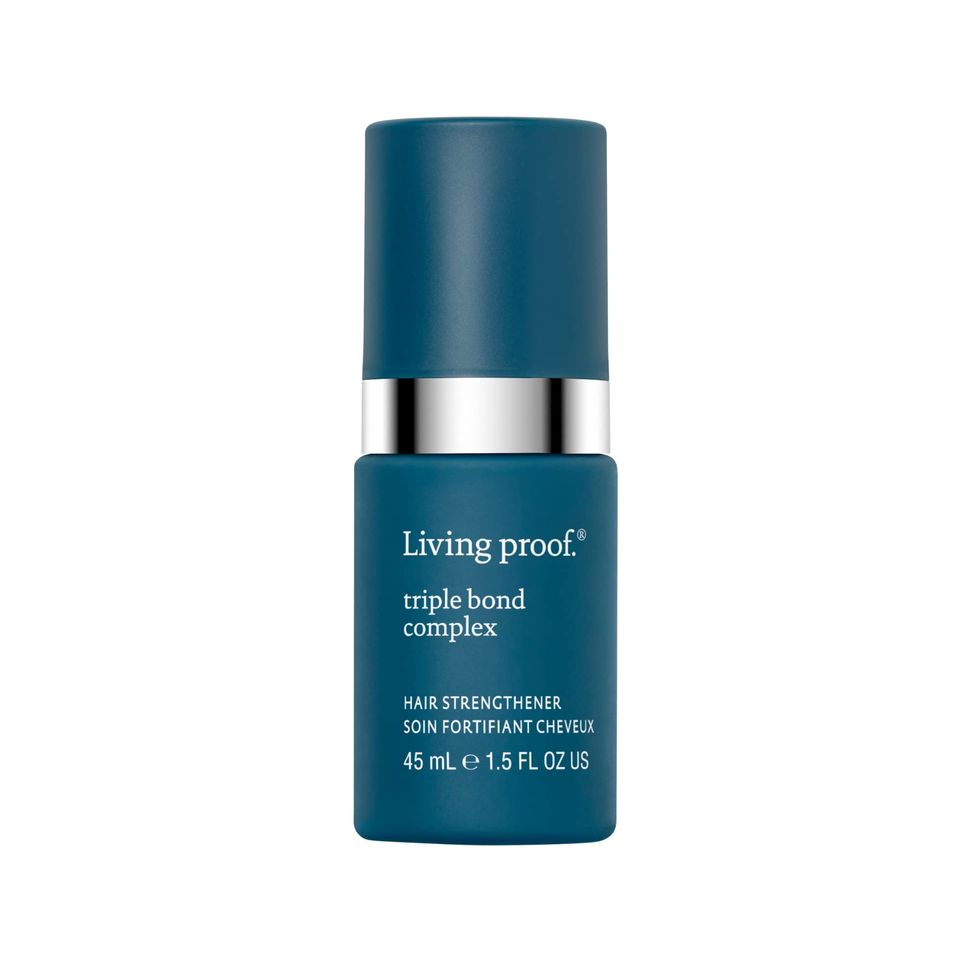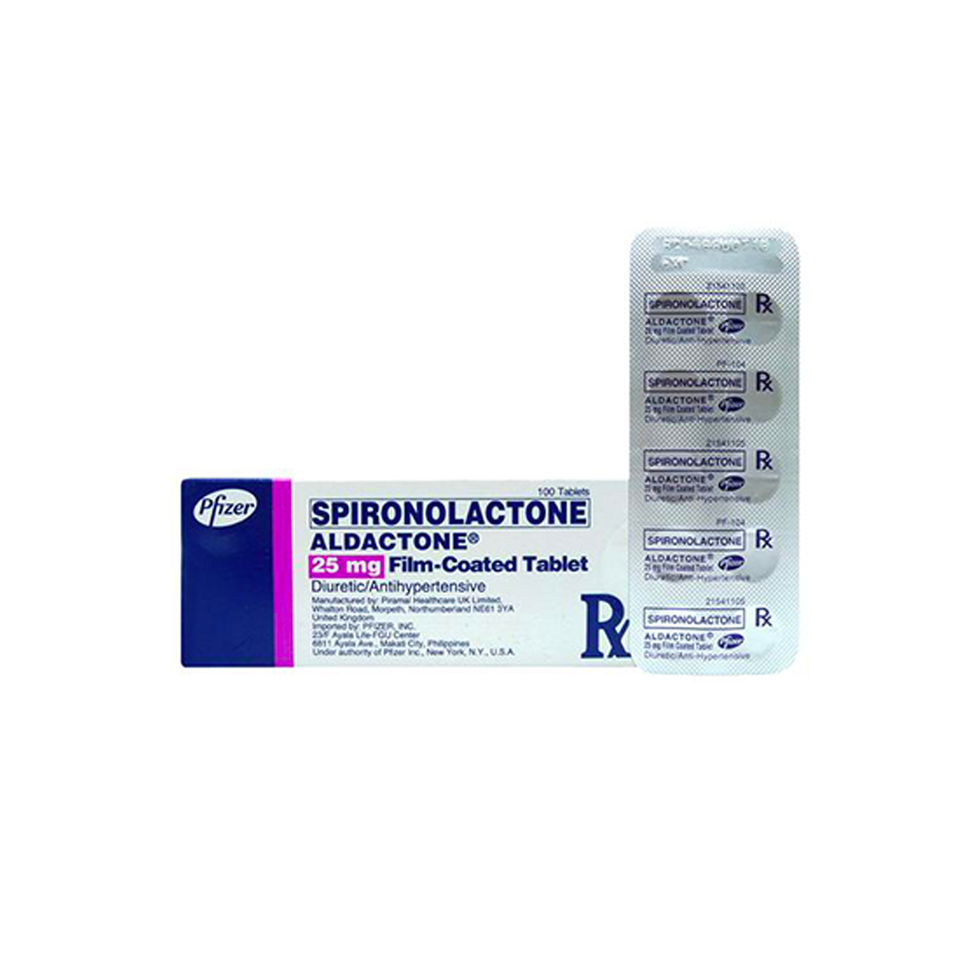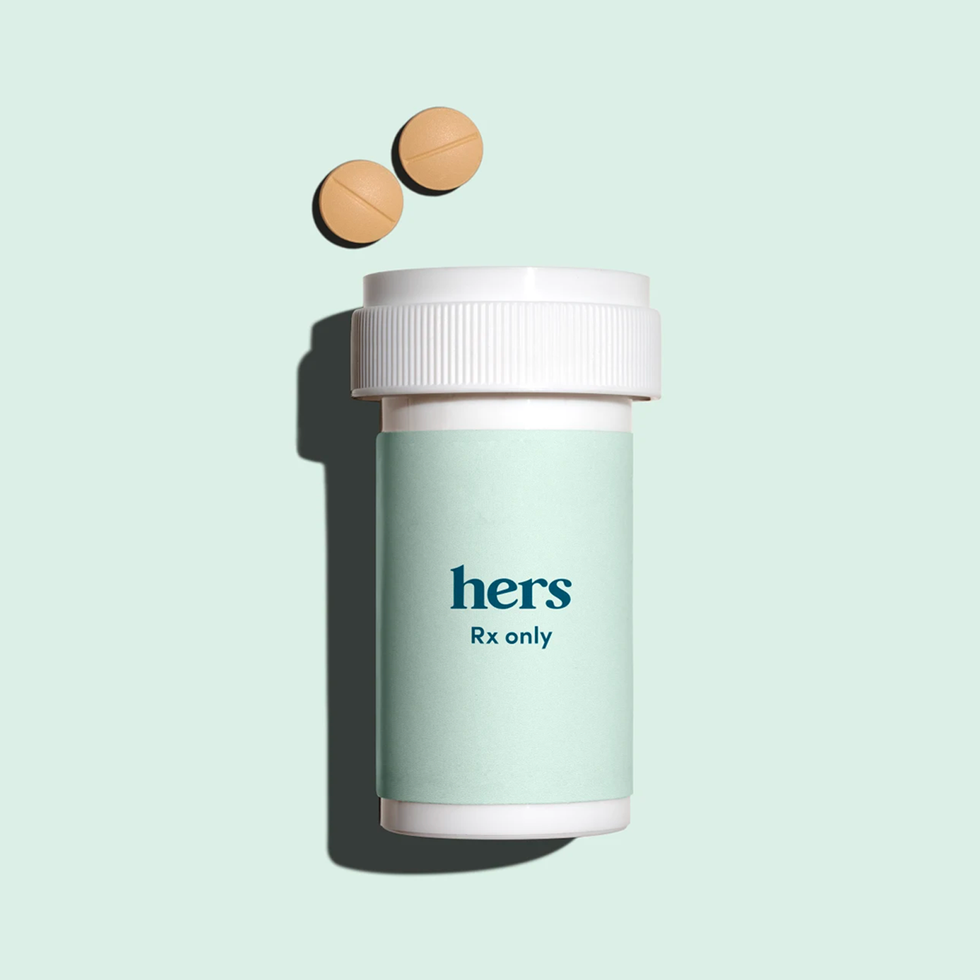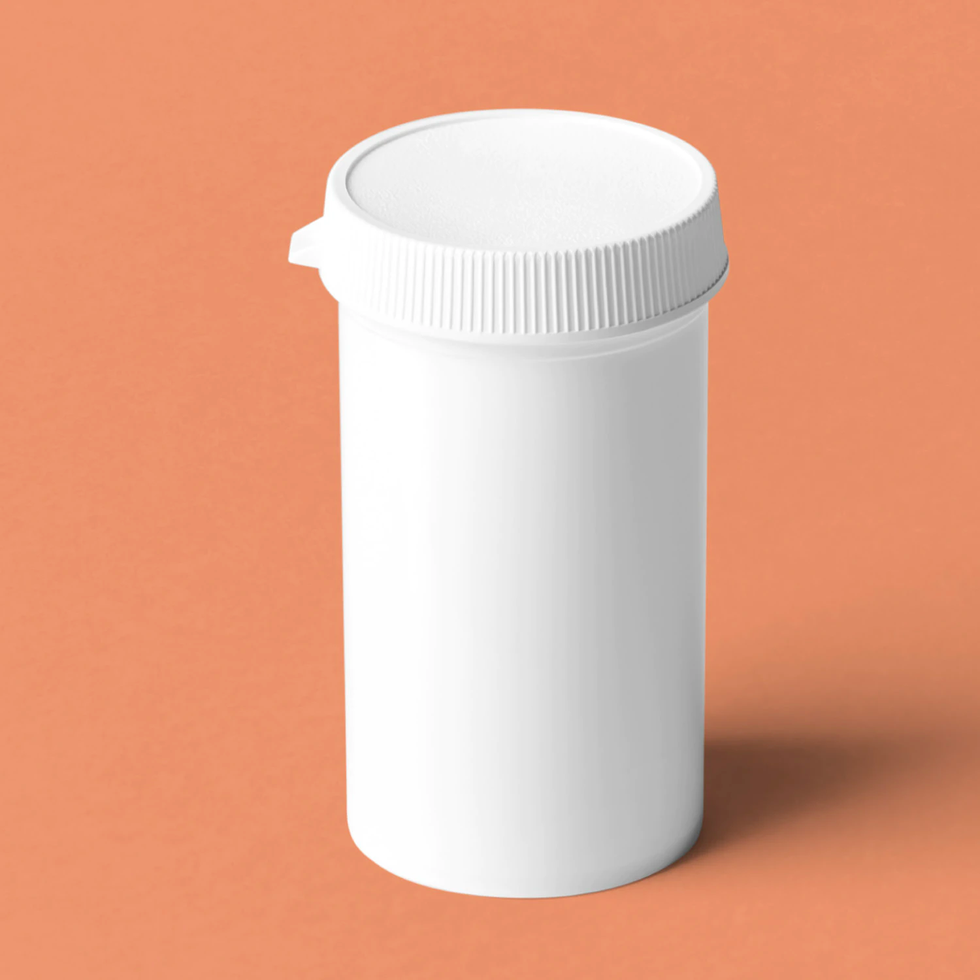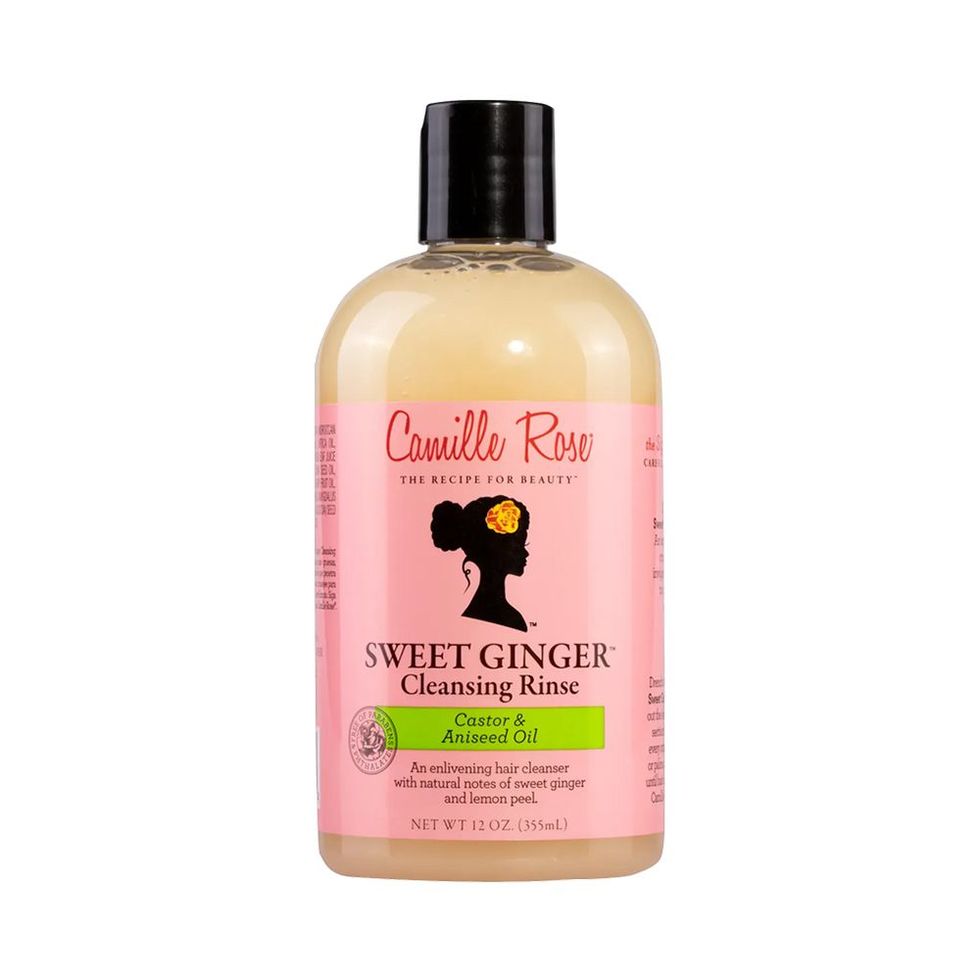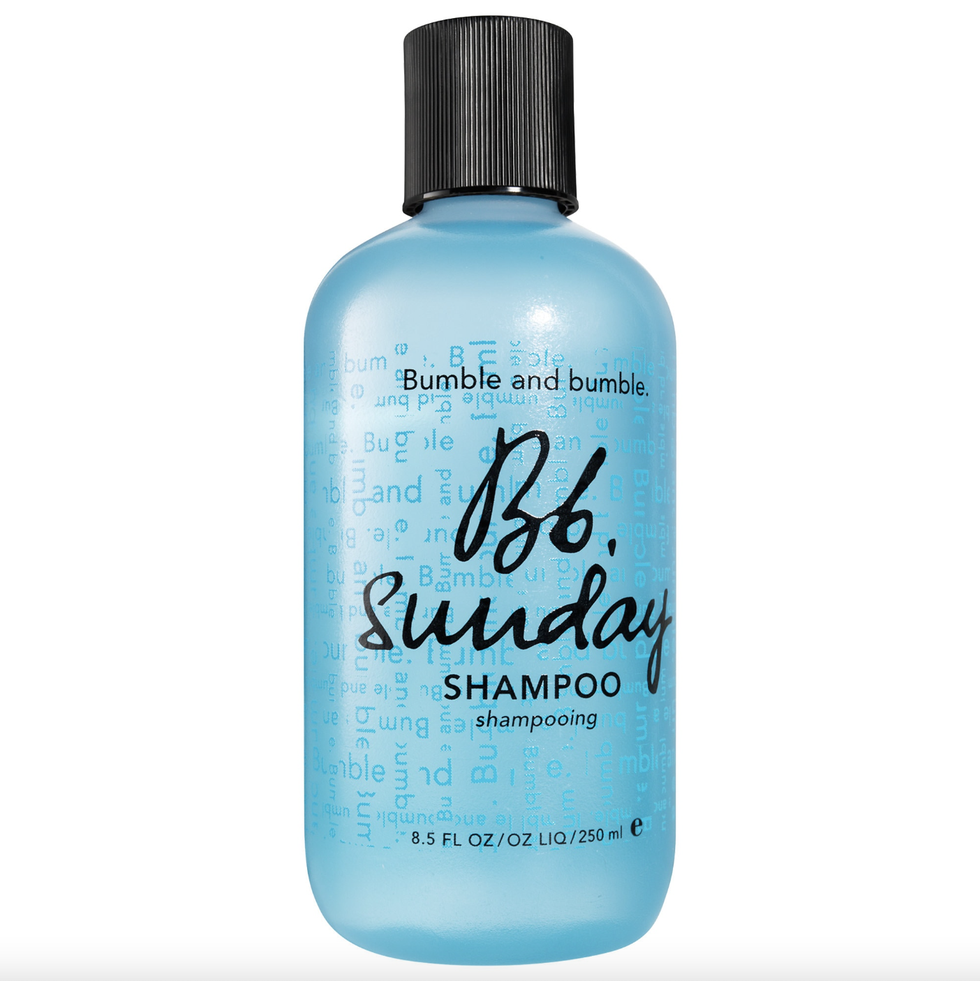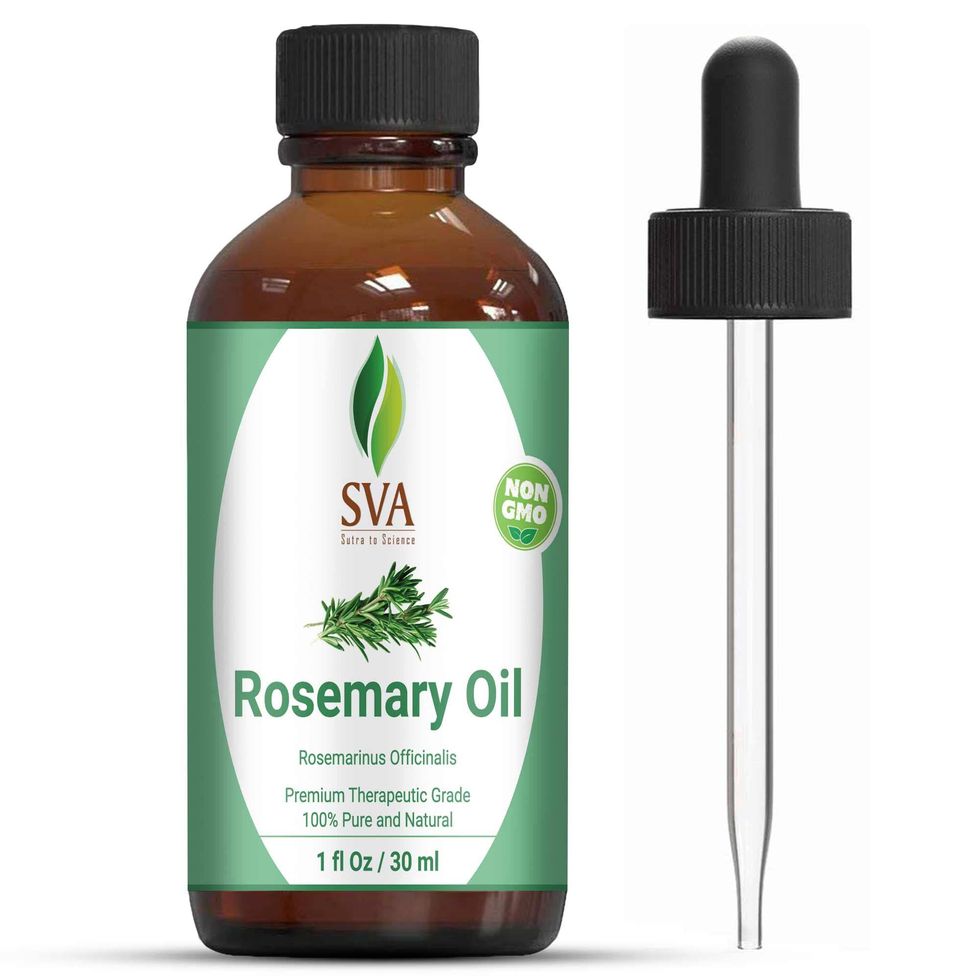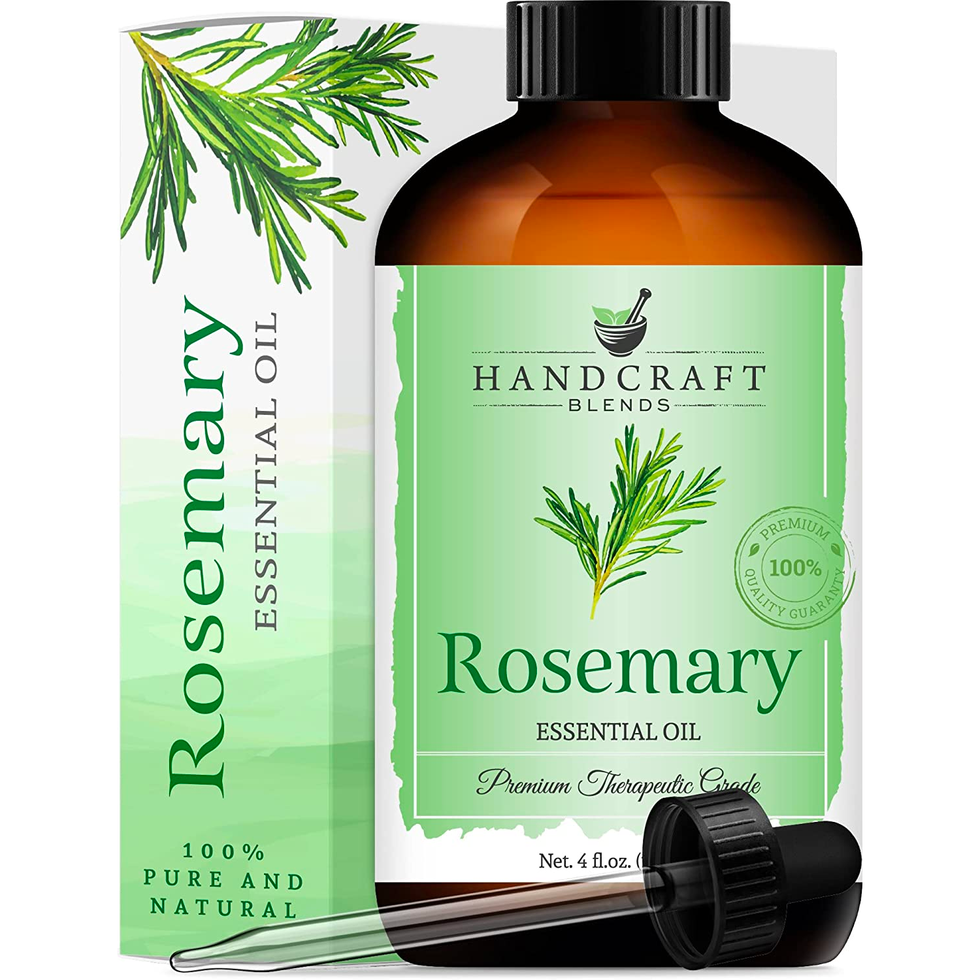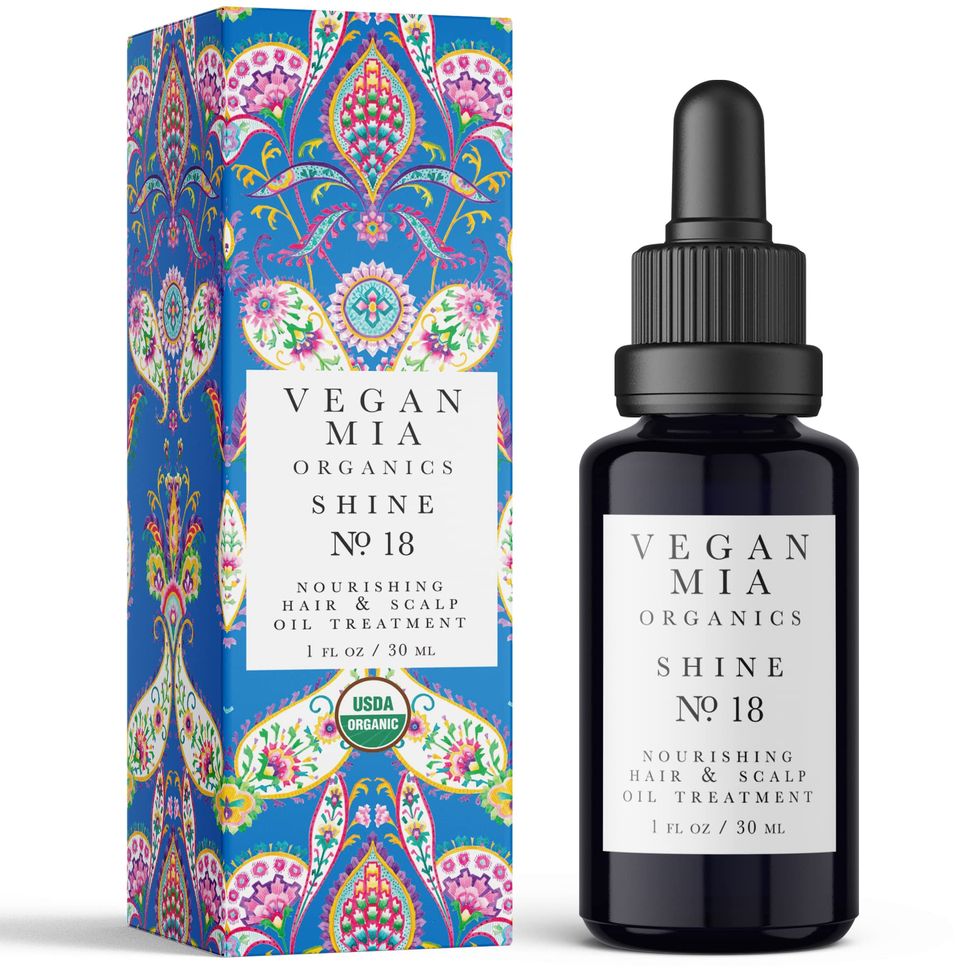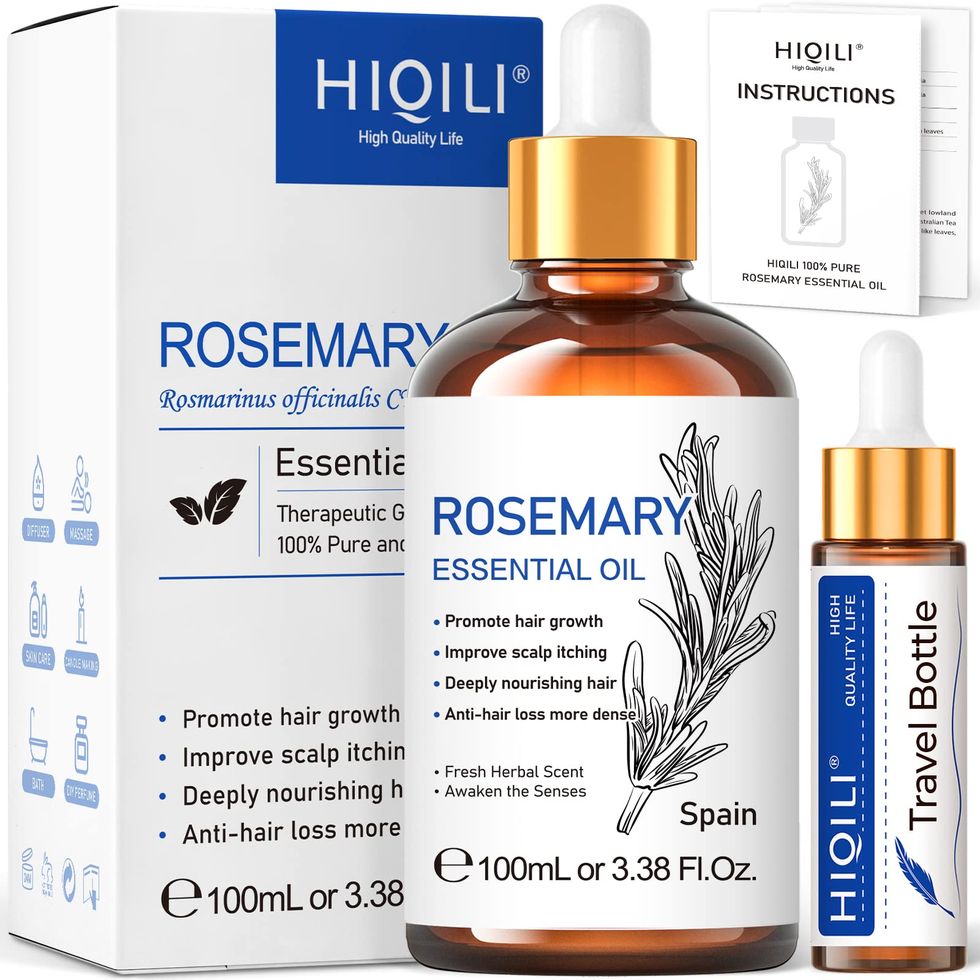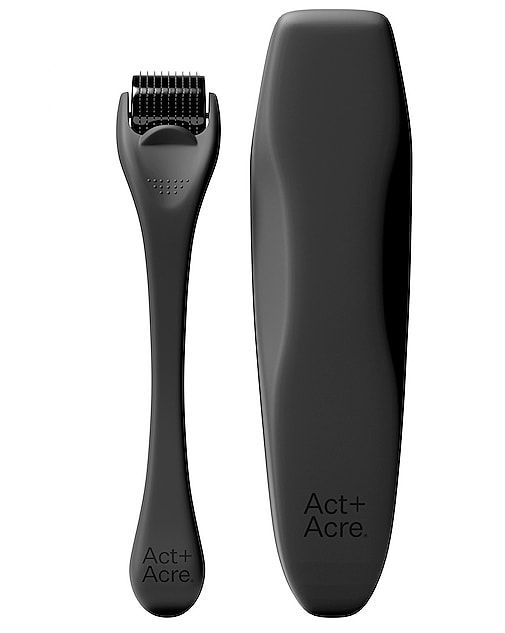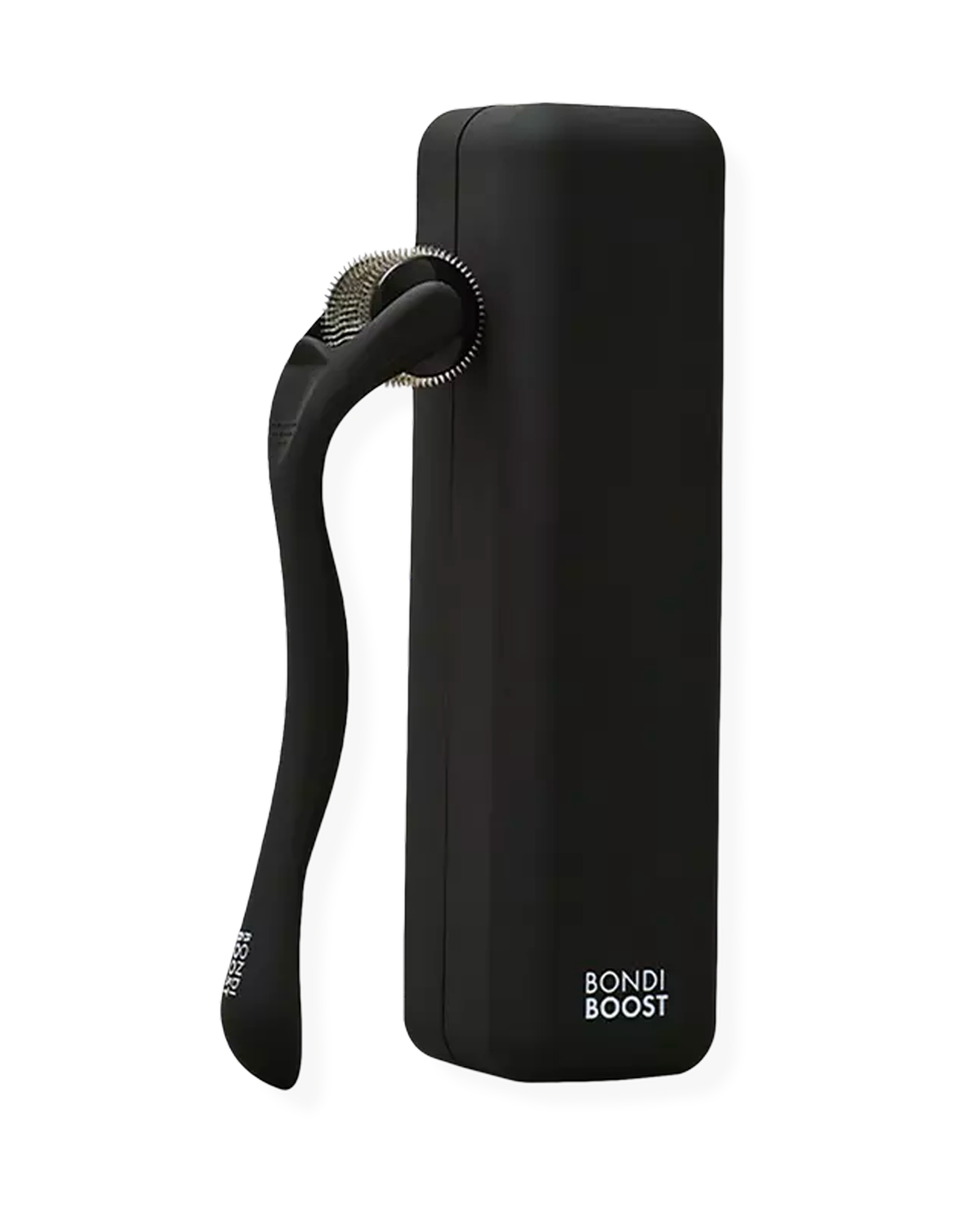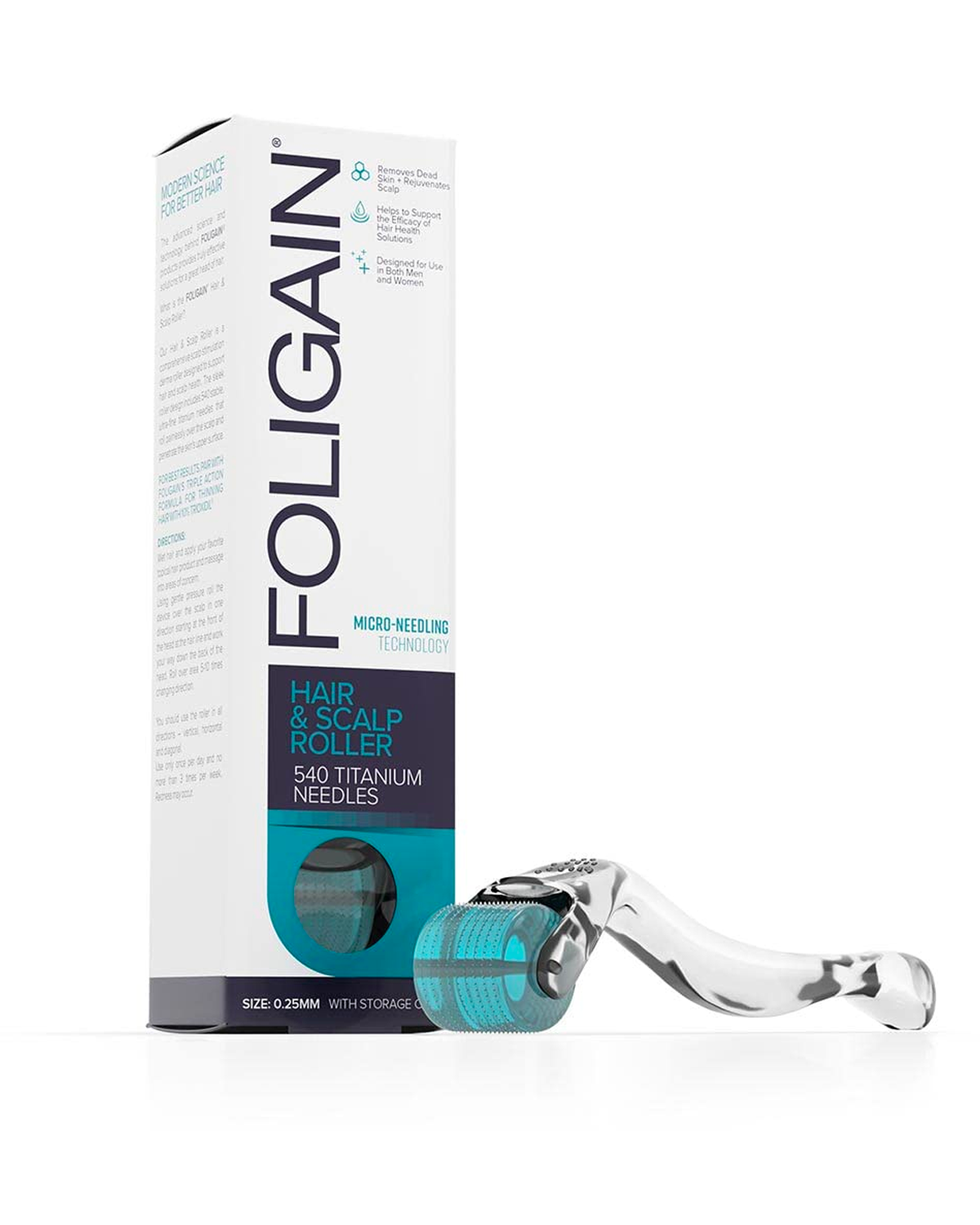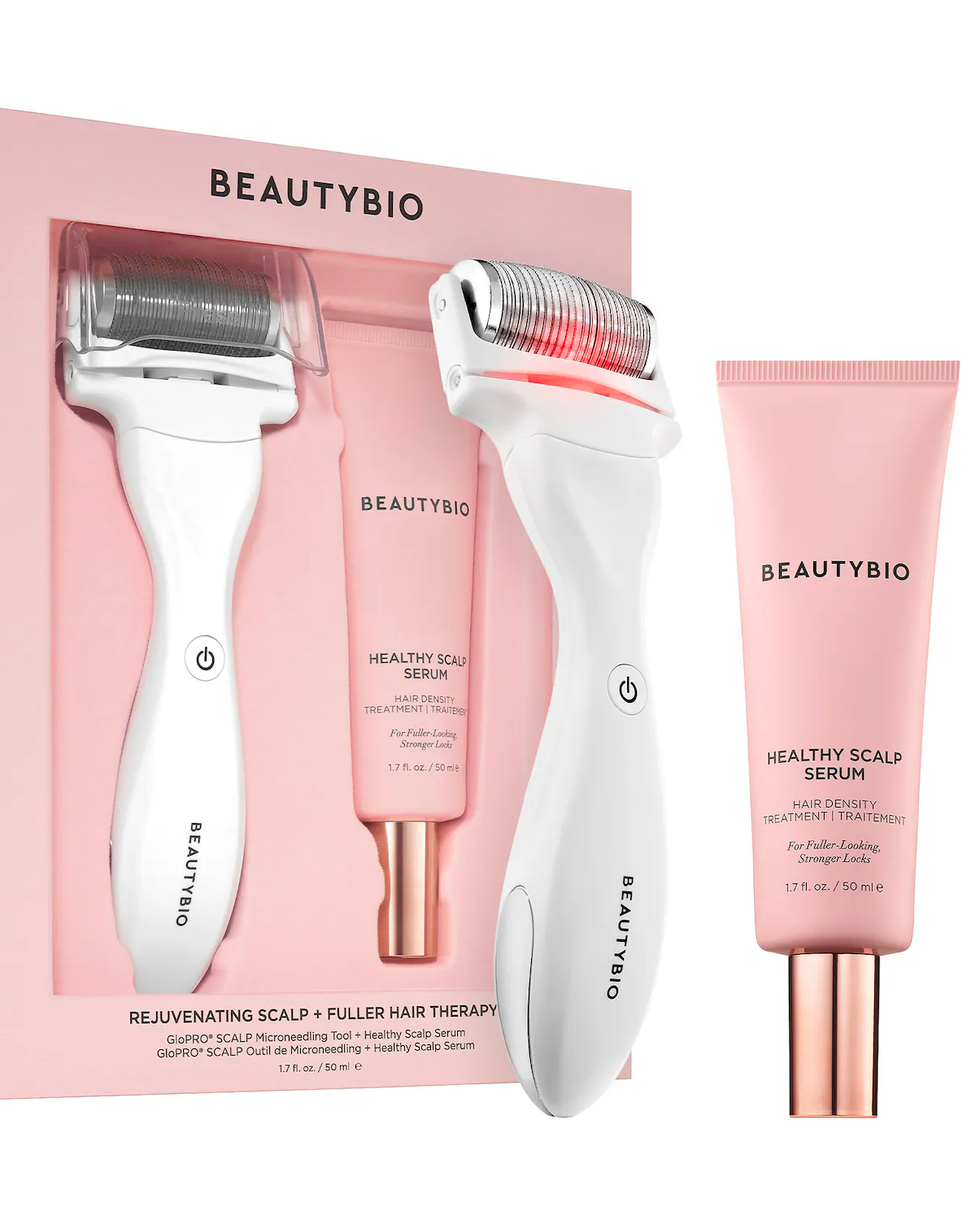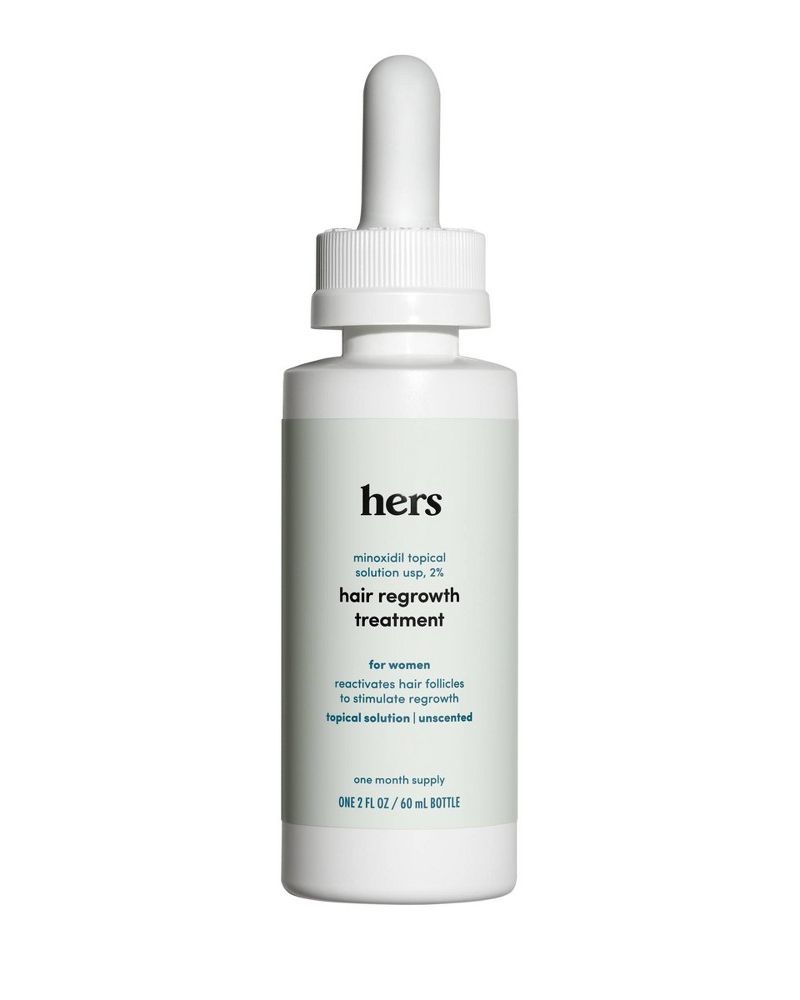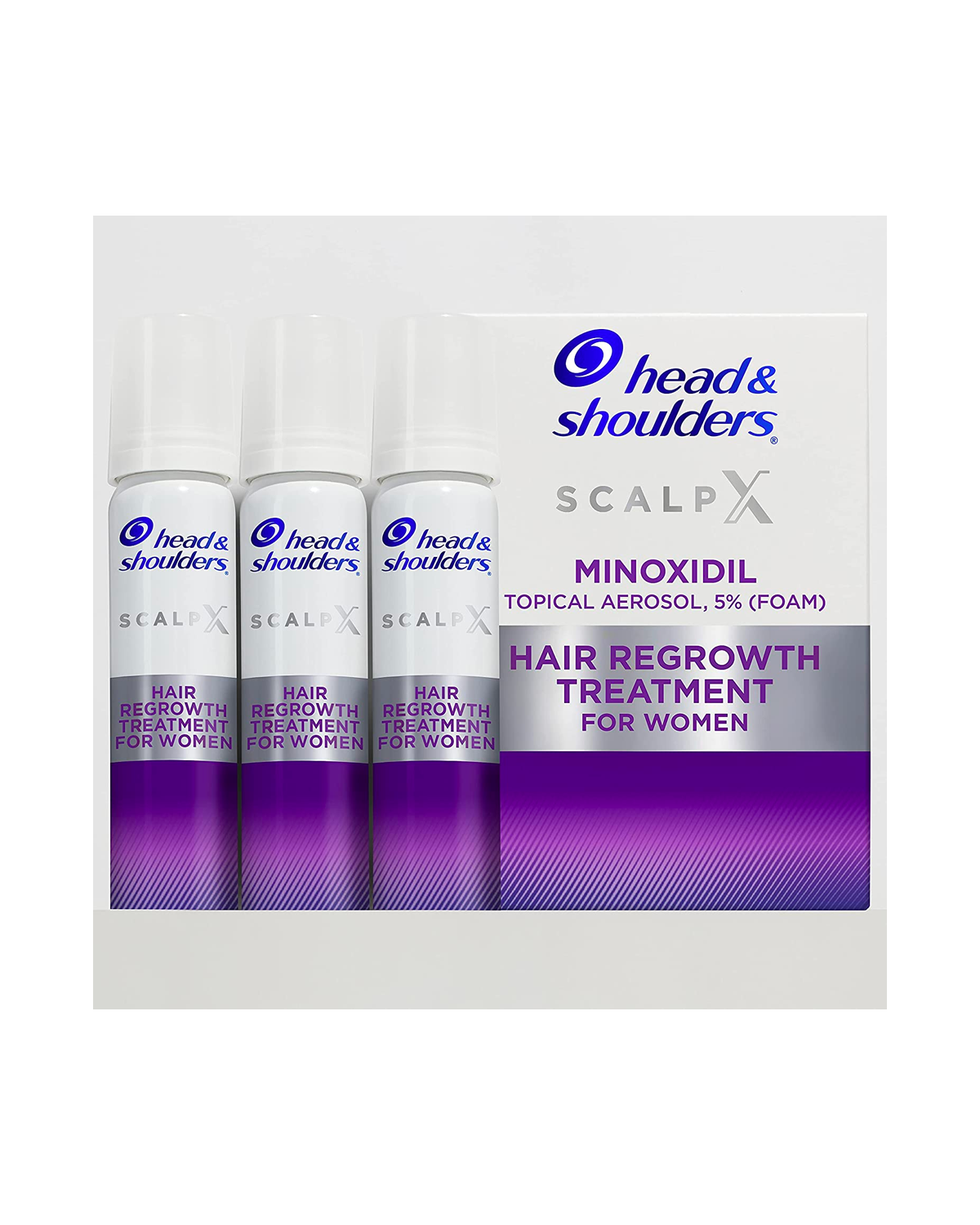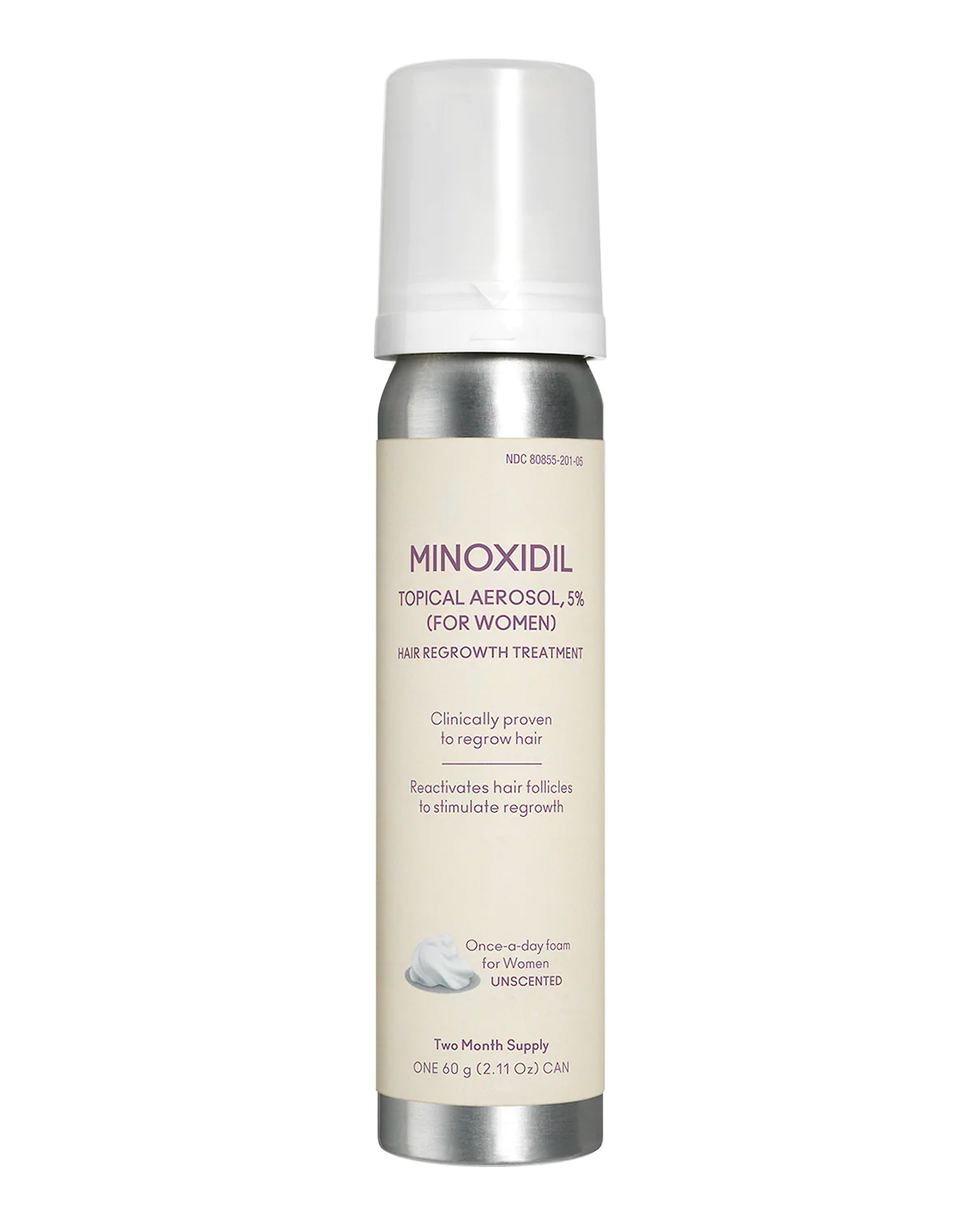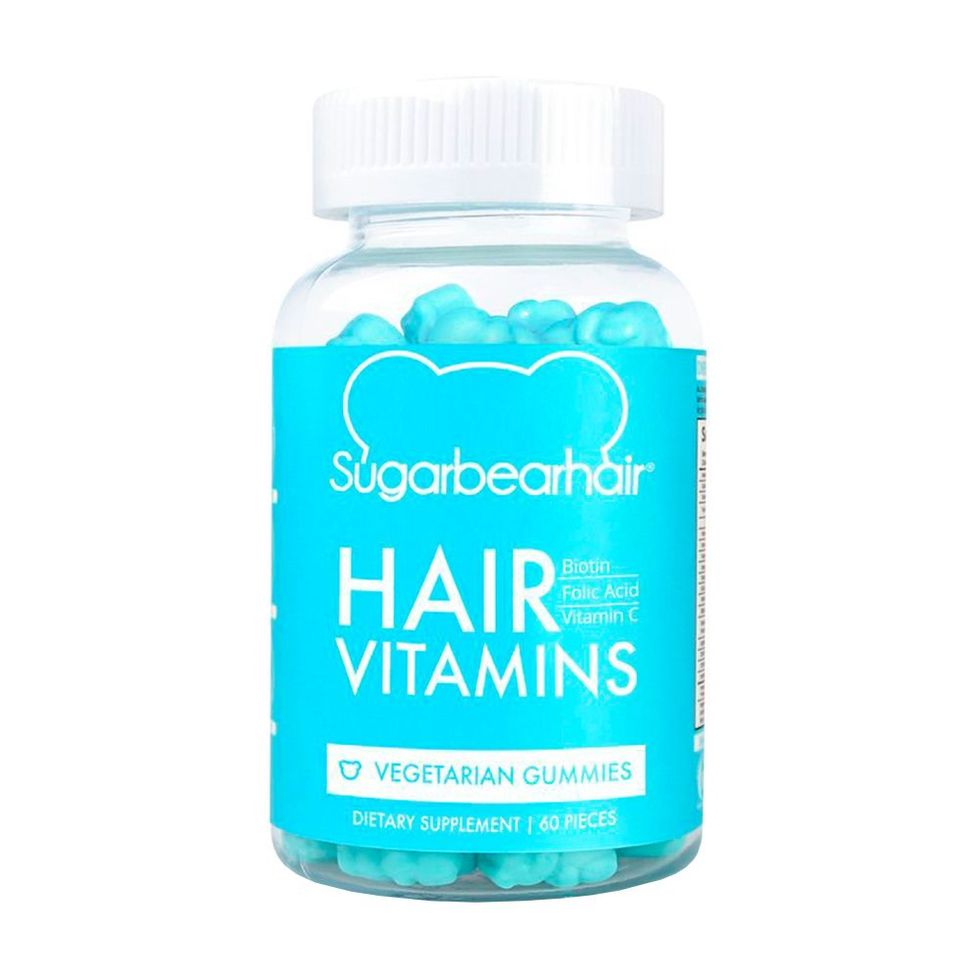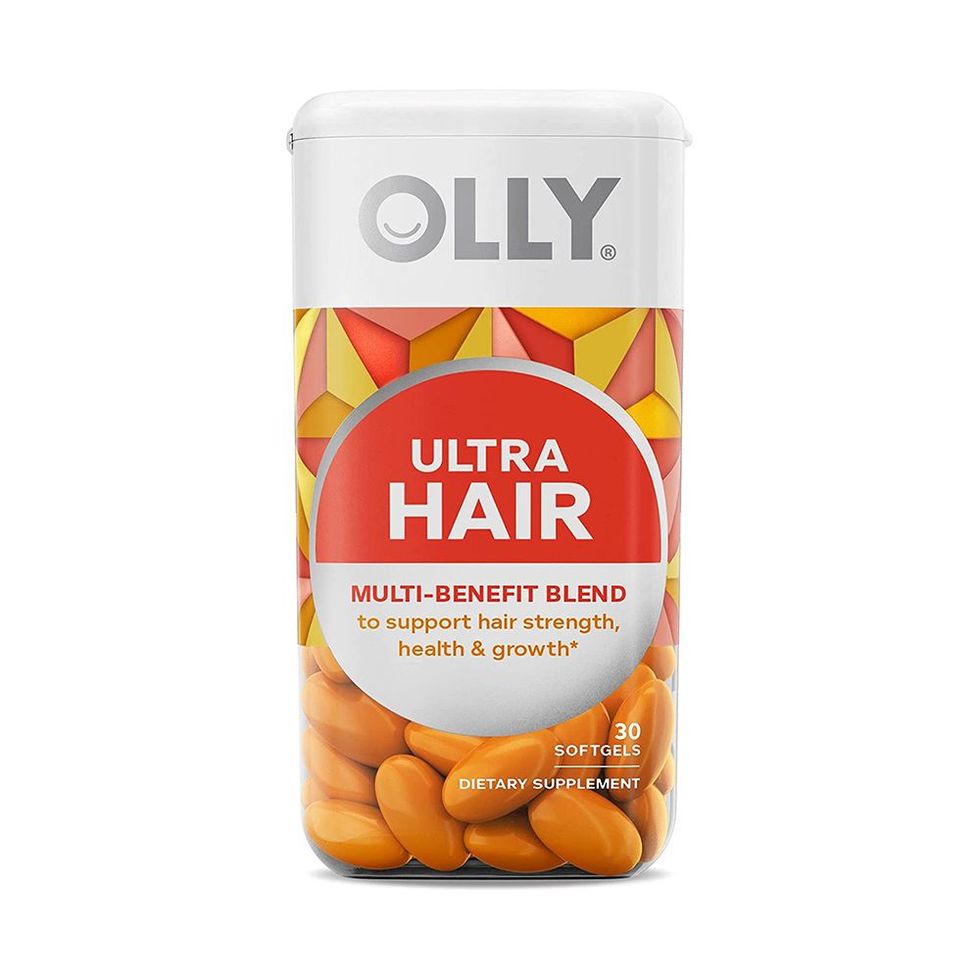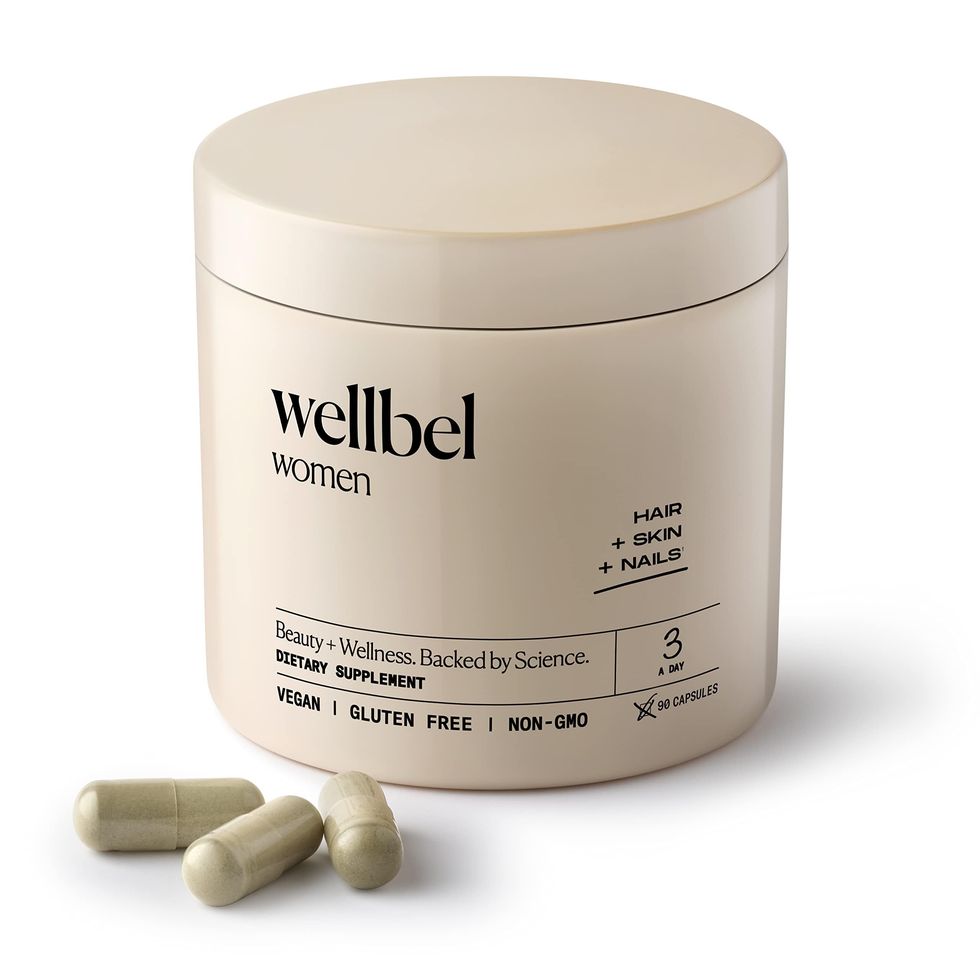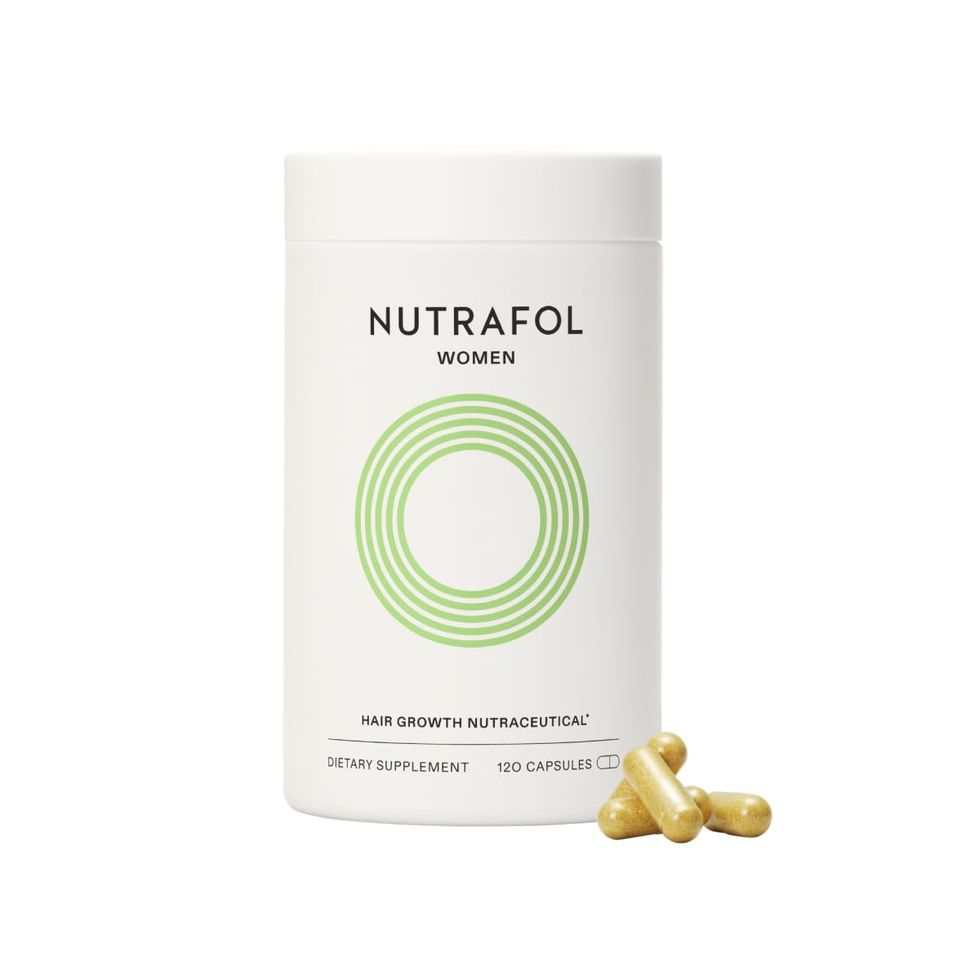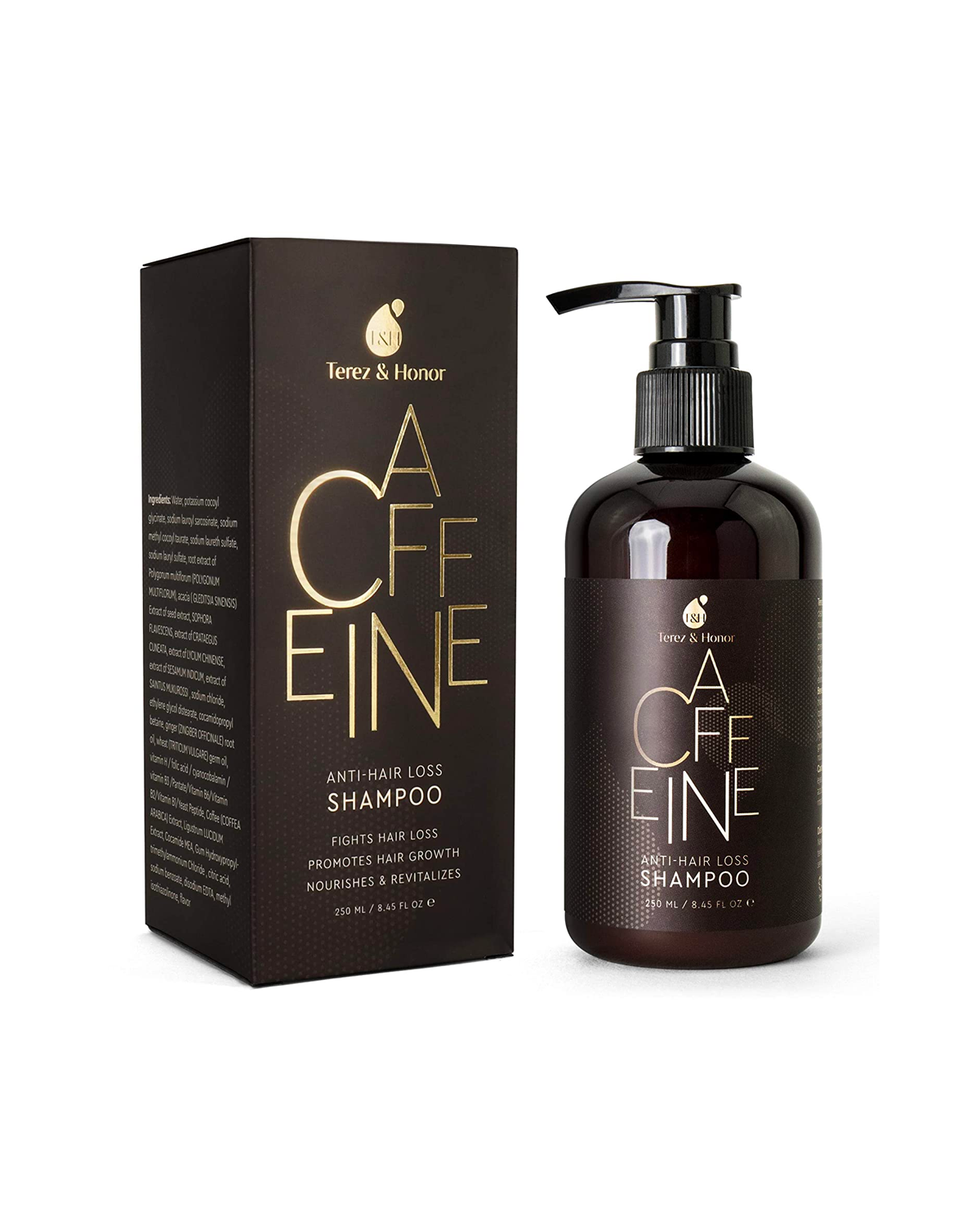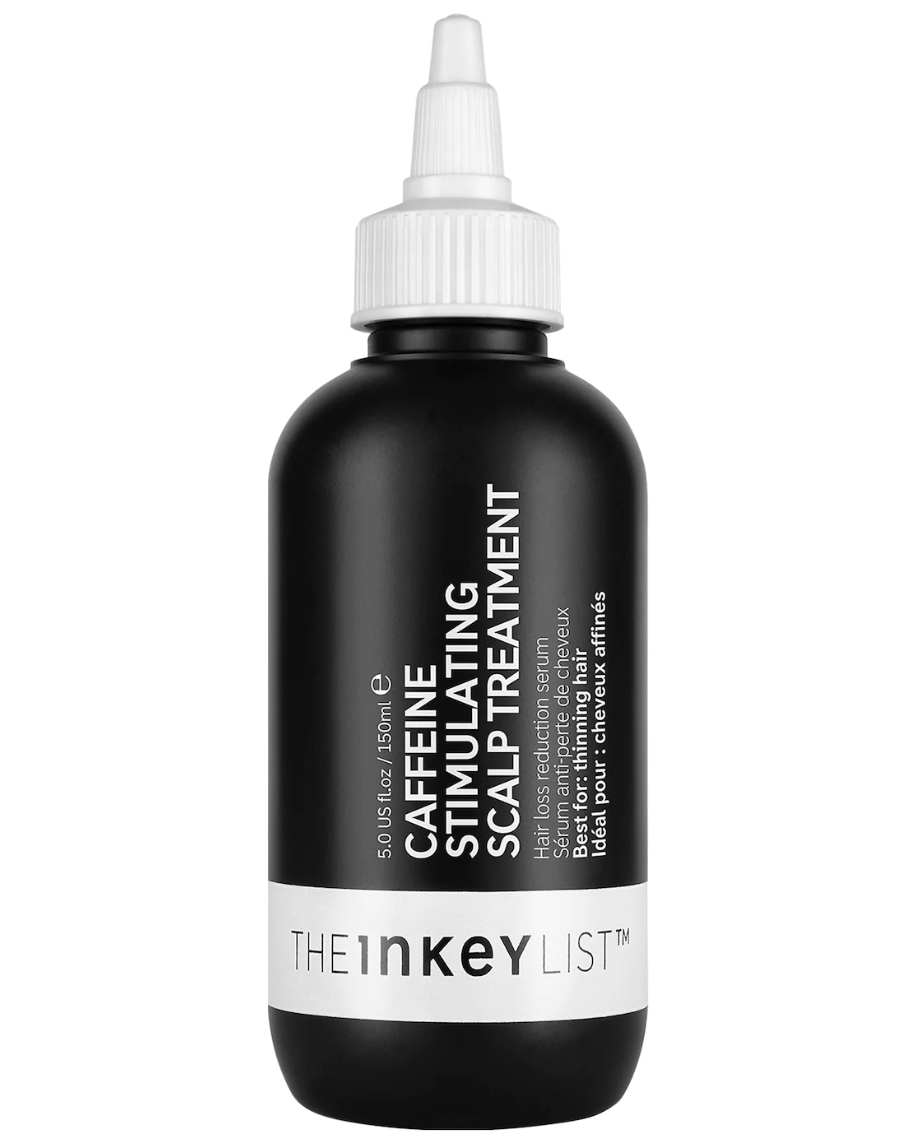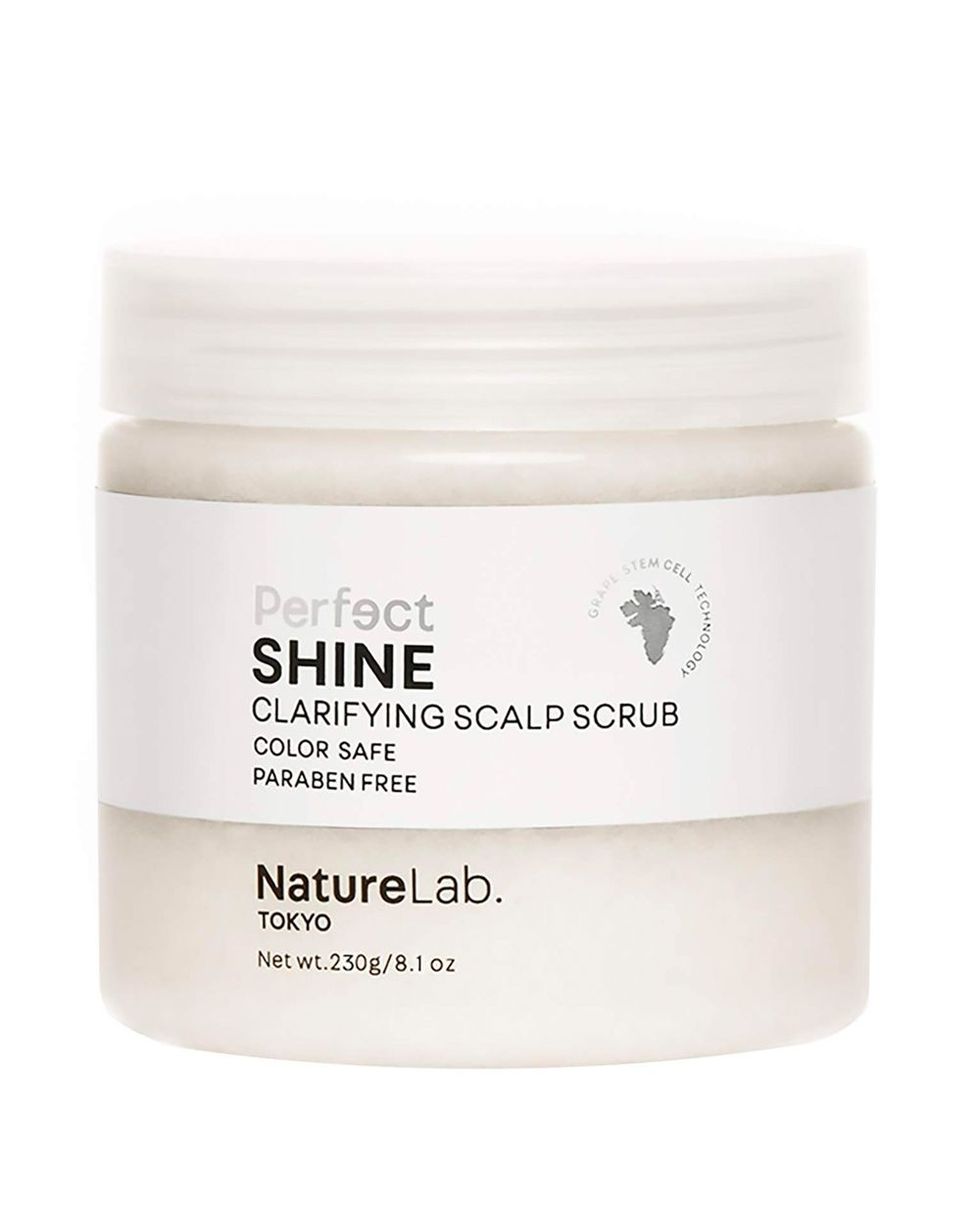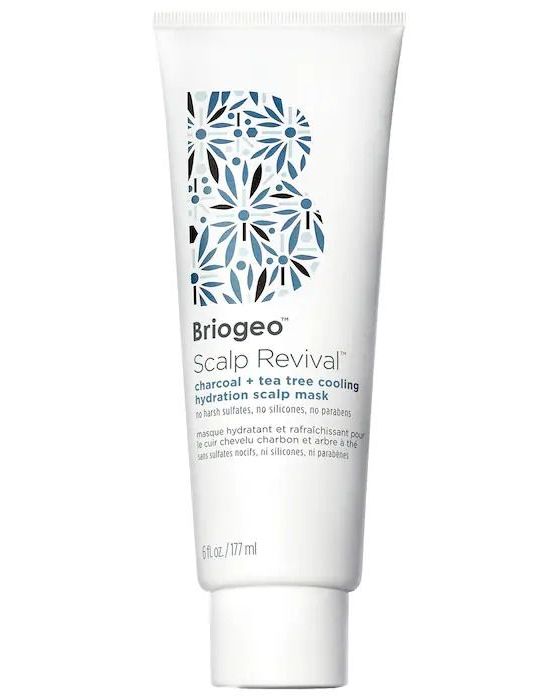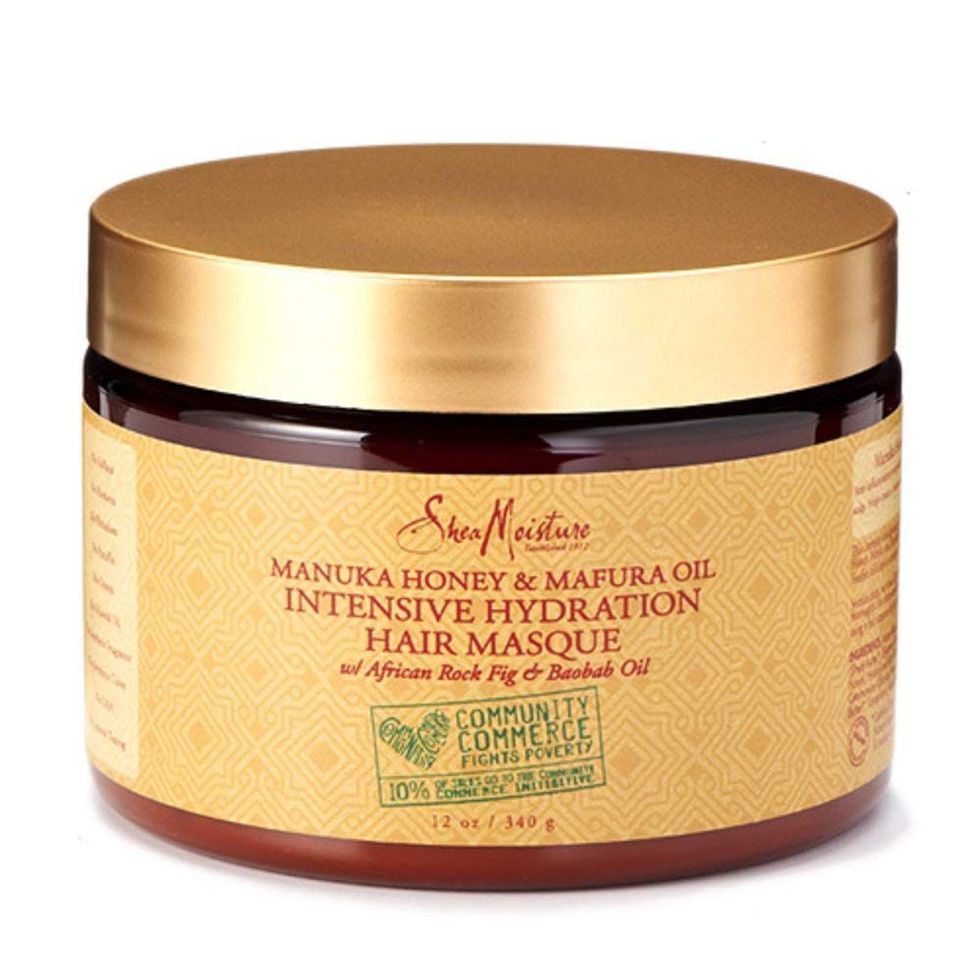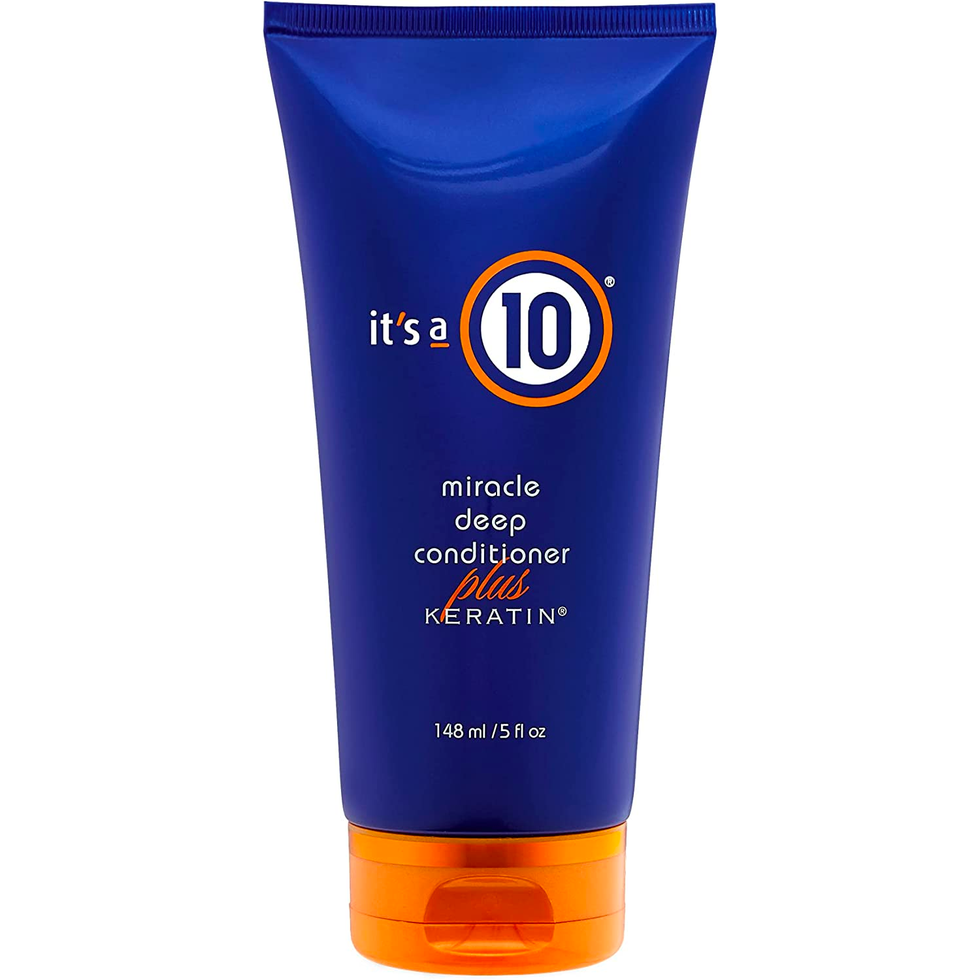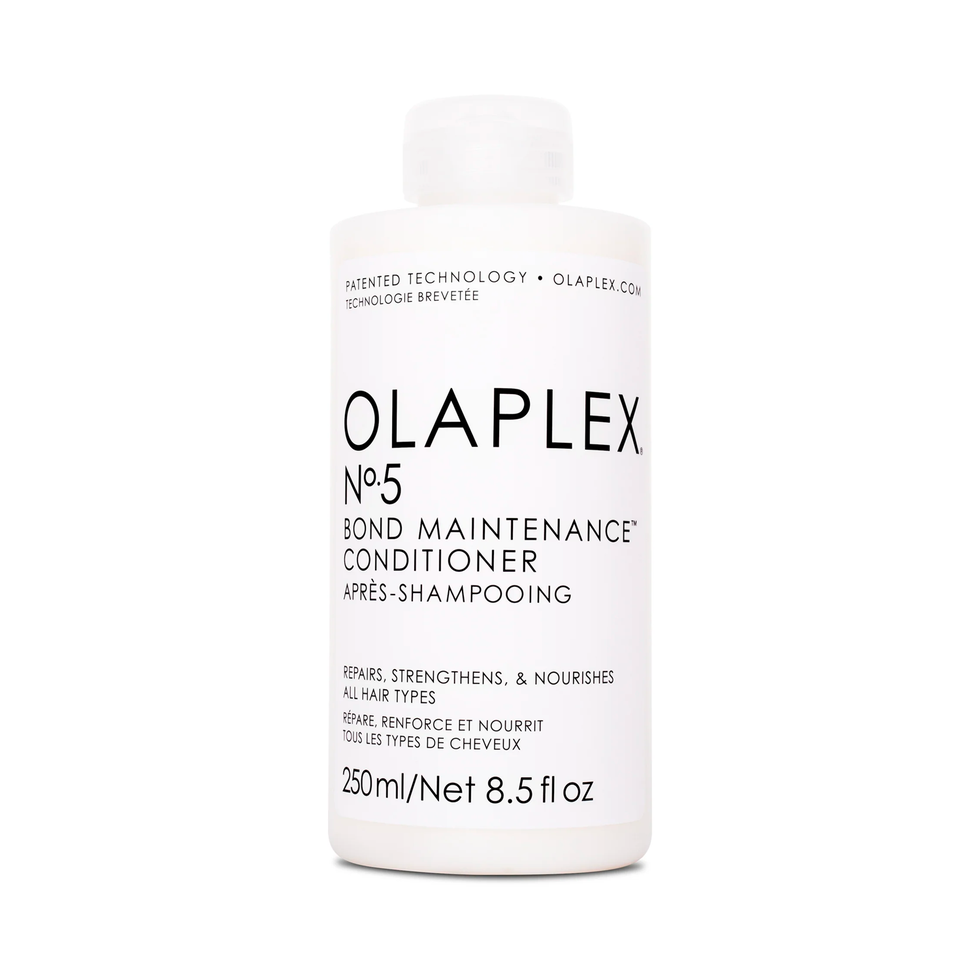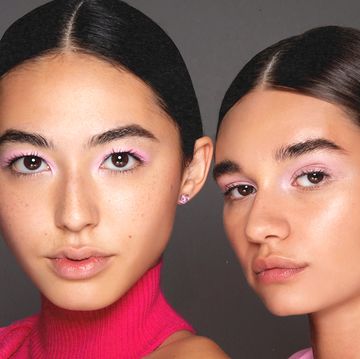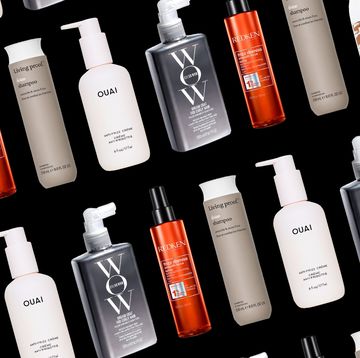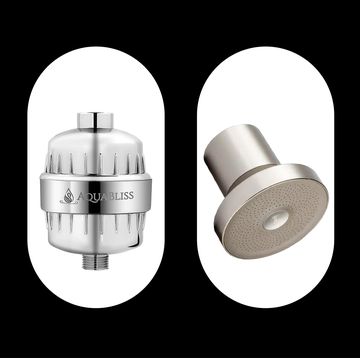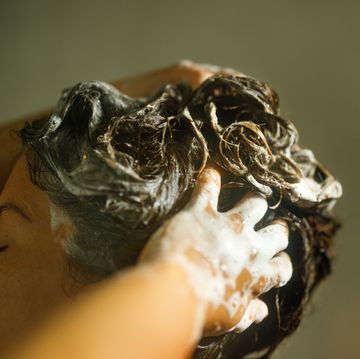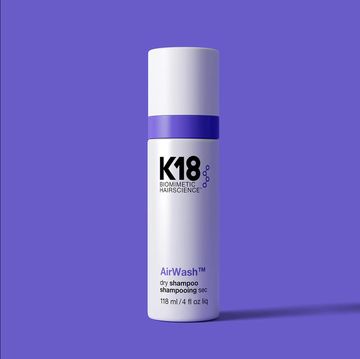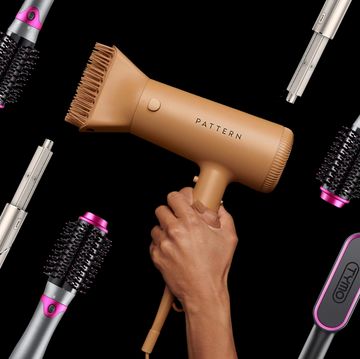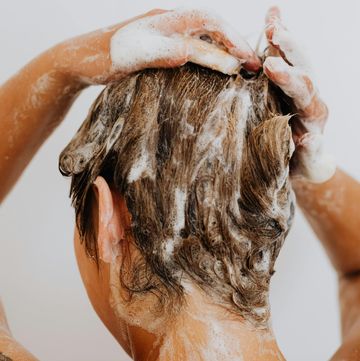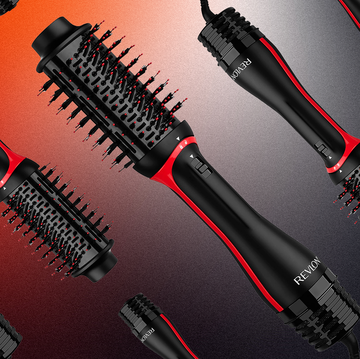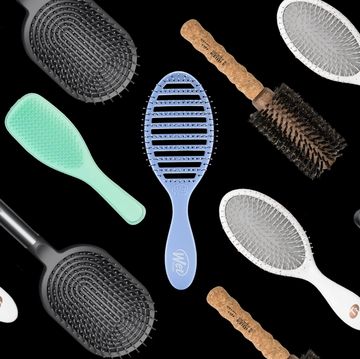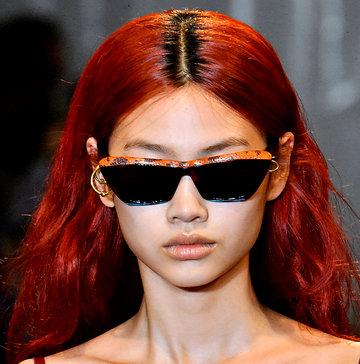At my most recent hair appointment, my hair colorist was shocked at how much my hair has grown since September. Although annoying AF for my highlights, my hair has been seemingly growing at the speed of light lately. For years, I spent time and money trying everything to make my hair grow faster (ahem, hair-growth vitamins, shampoos for hair loss, castor-oil scalp massages, aloe-vera treatments—the whole nine), and I’ve finally nailed down a few methods that have majorly helped encourage a healthier scalp and a lil hair growth.
But before I can reveal all my secrets let's get something straight first, because there are a lot of myths about hair growth out there. Unfortunately, your DNA and factors like hormones, age, genetics, and overall health are pretty much the only things that truly determine how fast your hair grows. However, there are a lot of options that can help slowly make your hair and scalp healthier, which is a great start for growing your hair long and strong. This where I—and the help of eight experts—come in! See below for 14 hair-growth tips I grabbed from three board-certified dermatologists, two trichologists (aka hair scientists), and three hairstylists, along with my tried-and-true techniques. But first, a science lesson on hair growth:
How fast does hair grow?
According to research, hair naturally grows at a rate of 0.35 millimeters per day, which equals roughly ½-inch per month for a total of 6 inches per year. Note: The shorter your hair (whether you’re working with a bob, lob, bangs, or a buzz cut), the faster your hair will appear to grow—even though the rate hasn’t changed. Similarly, already-long hair may appear to be at a standstill, when it’s actually steadily growing (barring, of course, medical complications; more on that below).
It’s also important to know that you were born with all of the hair follicles you’ll ever have—between 80,000 to 120,000—meaning you can’t create more hair follicles (or more hair strands) than what you were born with, even if a product claims to give you fuller, thicker hair. That being said, in certain cases, you can potentially stimulate your hair follicles to help with regrowth, which is where the following 14 expert tips and products come in.
How do you make your hair grow faster?
Your hair growth is largely determined by your hormones, health, genetics, and age. So despite what advertisements and product labels may tell you, there’s no topical product that can truly grow your hair faster and longer (unless, of course, your body has a health condition or vitamin deficiency that when resolved can result in hair growth). That being said, hair growth requires a healthy scalp, a healthy body, and healthy hair habits to work most effectively.
When should I see a dermatologist about hair growth?
You should see a dermatologist about hair growth at any point in your hair journey, whether you’ve only recently noticed hair loss or you’ve already tried every hair-growth treatment available. “If your hair loss is abrupt and without an identifiable trigger, your scalp is itchy or painful, or if your hair loss or thinning is accompanied by other symptoms, then a trip to the doctor would be especially warranted,” board-certified dermatologist Samantha Ellis, MD, previously told Cosmo.
But in general, it can’t hurt to see a doctor and get a full blood panel to make sure you’re healthy, as vitamin deficiencies can stunt hair growth. Your dermatologist can also recommend prescription treatments—like higher-strength minoxidil, spironolactone, and finasteride—that actually have research that back up how they work to help encourage hair growth, rather than spending tons of money on hair-growth supplements and scalp treatments with little-to-no scientific data.
How to make your hair grow faster
1. Incorporate bond-building treatments
Sure, hair growth begins at your scalp, but if your ends are damaged and breaking off, it'll never look longer. Enter: Bond-building treatments, which thoroughly saved my own hair after a whole lotta bleaching and heat damage from styling. These treatments essentially restore the bonds in your hair shaft that get broken from chemical treatments, heat, and mechanical damage over time.
They all work a little bit differently. For example, Olaplex and Epres both use patented formulas that actively restore the broken bonds, while K18 combines a blend of peptides to rebuild and repair the broken peptide chains in your hair. Other treatments that are filled with peptides or proteins, like Living Proof, help strengthen your hair and fill in the cracks in your cuticle that lead to breakage.
How often you use a damage-repair product like this def depends on your hair's damage levels, FYI. When my hair was severely damaged, I would load up on a bond-building treatment once a week. Now that my hair just has a little bit of color damage, I smooth one of the below treatments through my hair about once or twice a month.
2. Ask your doctor about prescription hair-growth treatments
If you want to get serious about treating hair loss and making your hair grow faster, head to your dermatologist for a prescription option, like spironolactone (a blood pressure medication commonly used off-label in women to treat hormonal acne) that can potentially help increase hair growth over time, board-certified dermatologist Dhaval Bhanusali, MD, has told Cosmo. I've been on Spiro for years now to help with my zits, and I do think it's drastically helped reduce the hair thinning I started to notice beforehand from stress.
You could also ask your doctor about a compounded-topical treatment, like HairStim, which allows your dermatologist to create a custom cocktail of prescription hair-loss treatments tailored to you. Think: Higher-dose minoxidil than over-the-counter options, topical finasteride, topical spironolactone, retinoids, salicylic acid, and more—all depending on your specific needs and goals. But FYI: HairStim isn’t covered by insurance, and it costs $60 for a 30 to 60-day supply, which can add up over time, as you’ll need to consistently use it for 10 to 12 weeks to see results.
3. Increase your protein intake
When I started weight lifting and began majorly upping my protein intake, my hair seemed to grow a lot faster. And it makes sense: Your hair follicles are mostly made up of protein, and when you're not getting enough protein from your food, it can potentially lead to hair loss and thinning. A few things I incorporated were eggs, black beans, collagen peptides, plant-based protein powders, lentils, chicken, yogurt, and cottage cheese.
But protein isn't the only thing you should focus on, because hair health and growth all starts with proper nutrition. “There are a lot of people who are vitamin deficient and don’t realize it, because of either dieting, poor nutrition, or intense stress,” trichologist Dominic Burg has previously told Cosmo. And when you’re not eating enough or you’re undergoing intense periods of stress, “Your body will shut down your hair growth first and redirect nutrients and energy to the organs that need it most,” he says, which leaves your hair growth at a standstill.
The best foods to help your hair grow faster, according to dermatologist Hope Mitchell, MD, include:
- Fruits (strawberries, avocados, blueberries, oranges, grapefruit)
- Vegetables (spinach, bell peppers, beans, broccoli)
- Fatty fish (salmon, mackerel, sardines)
- Nuts and seeds (almonds, walnuts, chia seeds, pumpkin seeds)
- Eggs
- Red meat and chicken
- Beans (lentils, black beans, pinto beans)
- Dairy (yogurt, cottage cheese, almond milk)
4. Remove build-up
Consistently removing buildup is majorly important for scalp health and hair growth. Why? When your scalp is gunked up with oil, grime, and excess product (dry shampoo and hairspray, I'm lookin' at you), you can cause buildup that leads to irritation and inflammation, which could potentially stunt hair growth.
Once a week or every two weeks (depending on your hair type and scalp—more often for oil-prone scalps), do a "reset" wash with a clarifying shampoo to help deeply clean your scalp and get rid of any built-up oil or product. I'm, personally, in the "pro-sulfates camp" every once in a while, especially on my ultra-oily hair or after I use any product that contains silicones, which are difficult to remove with sulfate-free surfactants. However, if you have dry, coarse hair, opt for a sulfate-free clarifying shampoo (Cosmo editors swear by the ones below, FWIW).
5. Massage your scalp with rosemary oil
No, scalp massage isn't some magic treatment to grow your hair faster. But it can potentially help by increasing blood circulation to your hair follicles. Even better? Pair it with a rosemary oil. Although it needs much more evidence to prove that it can help grow hair, rosemary oil has shown some data to *potentially* help encourage growth. One 2015 study compared rosemary oil to 2.5 percent minoxidil (the active ingredient in Rogaine) when used on men with genetic androgen-related hair loss and found that the two performed similarly. Actually, rosemary oil was less irritating for most scalps in the study.
Why does it work? Well, it's loaded with anti-inflammatory ingredients to help reduce inflammation (which is a major cause of hair loss and thinning), as well as antioxidants that supposedly can help increase blood flow to your scalp. Once a day, massage in a few drops of rosemary oil (either already in a formula, like Mielle's Rosemary Mint Scalp Oil, or mixed with a carrier oil, like castor oil or argan oil) into your scalp for a few minutes. Because my hair is oily, I always do my rosemary-oil massages before bed, then wash my hair in the morning.
6. Try microneedling with PRP for hair growth
PRP therapy, aka platelet-rich plasma therapy, is a treatment where a doctor draws your blood, separates the plasma from it, then re-injects it into your scalp to stimulate follicle activity. But for a less invasive route, consider getting a scalp microneedling session (like Vivace or Morpheus8), in which tiny needles microscopically puncture your skin to encourage collagen production and then your provider massages in the plasma.
It usually requires four treatments to see results, which can cost between $600 and $1,200 per treatment depending on your location, your provider, etc. “I do think PRP can work in the right patient, but it’s not a guarantee,” Dr. Bhanusali previously told Cosmo. “Studies show that 20 percent of people get a significant improvement [in hair growth], 20 percent get slim-to-no results, and, anecdotally, the other 40 percent get a 10 to 15 percent improvement.”
But if you’re afraid of needles/blood or want an at-home option, you can try running a dermaroller over your clean scalp once or twice a week, then massaging in your favorite scalp serum to help with product penetration and stimulate some collagen production (which can, potentially, lead to hair growth over time).
7. Try topical hair-growth products
If you’re concerned your hair isn’t growing fast enough—and/or you’re experiencing hair loss and thinning—book an appointment with a dermatologist ASAP who will help you identify the cause and help you formulate a treatment plan, which might include a topical solution like minoxidil, i.e., the active ingredient found in topical products like Rogaine and Hers.
“We don’t know the exact mechanism for how it works, but we think a lot of it has to do with increasing blood flow to the scalp,” Dr. Bhanusali has previously told Cosmo. “It’s like giving more water to the plant to help it grow.” If you do decide to try minoxidil-based products, you need to be consistent and commit to using it daily.
8. Consider hair-growth vitamins
First, it’s important to note here that hair-growth supplements are not a miracle cure for growing hair faster (and usually won’t even work unless you’re actually deficient in vitamins). They also shouldn’t be taken without talking to your doctor first. Why? Because even though these gummies and vitamins seem innocent, they aren’t regulated by the FDA, meaning they can contain any ingredient they want and claim whatever fact they want.
Not only that, but if you eat at least somewhat balanced foods (more on that below), your body will already be filled with the only hair-strengthening ingredients it needs, like biotin, folic acid, vitamins D, A, C, and E. So doubling up your dose by popping hair supplements won’t make a difference. “Your body only keeps what it needs and then it gets rid of the rest,” says Burg.
That said, if you think you might be vitamin deficient, you could be a solid candidate for hair-growth supplements. But as always, ask your doctor. You’ll want to make sure you’re choosing the right amount (and type) of vitamins to help hair grow faster and longer, and that they won’t interact with any medications you’re currently taking. Once you get the green light, check out a few of the internet’s favorites:
9. Try caffeine hair treatments
According to Dr. Bhanusali, topical caffeine not only helps stimulate blood flow to your scalp (which is essential for healthy hair growth), but it also helps counteracts DHT, the hormone responsible for hair loss. While it’s not guaranteed to grow your hair faster, it’s one of those at-home ingredients that can’t hurt to try.
Still, you’ll need to be patient: If caffeine does help reduce some of your hair loss—or have a positive effect on your hair density and health—it will take two or three months to see results. So start using one of these shampoos, scalp serums, or leave-ins ASAP if you’re after longer, thicker hair:
10. Trim your hair
No matter how well you treat your body, your hair will never look longer if you're not taking proper care of it, which starts with getting regular haircuts and trims. Despite what misleading hair products will tell you, split ends will never get better on their own; they need to be cut off or they’ll keep splitting higher and higher until the strand of hair breaks off.
So even though it sounds counterintuitive to cut your hair to make it grow “faster” and look longer, it’s a nonnegotiable requirement. “Your hair will actually be shorter un-cut than it would be if you were to get consistent trims,” says hairstylist Mark Townsend. He suggests asking your stylist to take just an eighth of an inch off your hair every 10 to 12 weeks to prevent split ends before they even start.
11. Wear protective hairstyles
Whether you’re trying to grow out your 4c hair or your 2a waves, you’re going to have the most success at growing your hair “faster” if you stick to protective style. The general ~equation~ for hair growth is time (see: patience) + hydration (like hair masks and deep conditioners) + low manipulation (which means cutting out the chemical treatments, coloring, and tight styles).
Hair that’s left down is prone to tangling up and drying out (especially at the ends), which is where protective styling is key. Opt for loose twists, rolls, and French braids that you can DIY at home regardless of your hair type, or ask your braider for jumbo box braids or faux twists for a longer-lasting protective style, if you’re working with type 4 hair.
And if you are working with type 4 hair, listen up: “Don’t just braid your dry hair and call it good,” says Jasmine “Jazzee” Green, hairstylist and natural hair expert. “To prep, saturate your wet hair with a ton of leave-in conditioner, then blow-dry with a comb attachment until it’s 100 percent dry, stretching each section with your fingers as you work.”
Yup, blow-drying natural hair. With heat. Sounds potentially scary if you're dealing with breakage, but “heat helps the leave-in penetrate your hair cuticle and stretch it, so it won’t shrink up and dry out as quickly in your protective style,” says Green.
12. Focus on scalp care for hair growth
If you’re trying to grow your hair faster and longer, you need to pay attention to your scalp. “The two most important layers of the skin in relation to the scalp are the dermis and the epidermis,” says trichologist Bridgette Hill. “The dermis contains our hair follicles, glands, nerves, blood vessels, collagen, elastin fibers, and fat cells, so a proper scalp routine will impact the rate of hair growth and the health of your hair fiber.”
When you take care of your scalp, you’re ensuring that fresh blood and nutrients can easily flow to the hair follicle, says Hill. So what does proper scalp care look like? A mix of scalp oils, serums, and hair masks with scalp-stimulating ingredients like peppermint or tea tree oils that help increase circulation to the scalp, she says.
Hill also suggests incorporating a proper scalp shampoo once a week, i.e., where you apply shampoo directly to your scalp and let it sit for five minutes before rinsing and conditioning. Pro tip: A hair-color applicator bottle can help easily distribute the shampoo through your scalp. “Also, remember that consistency is key,” says hairstylist Adam Federico. “Work yourself into a scalp-care routine and stick with it. Remember that when it comes to hair health, you’re playing the long game.”
13. Keep hair conditioned
Consider conditioner and deep conditioner your hair-growth BFF. “It’s shocking to me how many people skip conditioner when showering,” says Townsend, “which is the worst thing you can do for your hair—especially when you’re trying to grow it long.” Why? Because coloring and heat-styling will eventually cause hair strands to get thinner at the bottom, leading to more breakage and shorter lengths.
Conditioner, however, helps replace the fat and protein inside your hair shaft while also sealing in moisture. Basically, it’s your first defense against the damage that threatens your long-hair goals, because it's actively working to protect and hydrate your hair.
14. Avoid bleach, chemicals, and damaging treatments
Sorry, but avoiding all hair dyes, bleach, and chemical treatments is necessary when growing out your hair, says Dr. Mitchell.When you bleach your hair, it opens up the cuticle of your hair strands, causing significant damage—especially for those with darker hair—every single time. Plus, hair that’s been color- or chemically treated is more likely to break, which will require more trims and less length for you.
When it comes to styling in general, “less is more” should be your motto when trying to make your hair grow faster. Dr. Mitchell recommends limiting the use of hair clips, extensions, and tight braided hairstyles that can cause tension. Even wearing your hair in the same hairstyle every day, like a ponytail or bun, can cause your hair to break over time too, so make sure to regularly switch up your style to help prevent damage.
Final thoughts:
Although you sadly can’t make your hair grow faster overnight or even within a week, you can change up your routine and food habits to make sure your hair can grow as easily and healthily as possible. And just remember: Your doctor should always be your first stop when trying to make your hair grow because only they will be able to tell you what’s really going on inside your body or within your scalp.
Meet the experts:
- Samantha Ellis, MD, is a board-certified dermatologist in Danville, CA. She’s also a clinical instructor of dermatology at the University of California Davis.
- Mark Townsend is a celebrity hairstylist and creative director at Collective Labs, a hair-growth brand that specializes in topical and oral products.
- Dhaval G. Bhanusali, MD, is a board-certified dermatologist and founder of Hudson Dermatology and Laser Surgery in New York City. Dr. Bhanusali is also the founder of HairStim, a custom-compounded hair loss formula that’s created and prescribed by your own dermatologist.
- Hope Mitchell, MD, is a board-certified medical and cosmetic dermatologist, as well as the founder of Mitchell Dermatology in Perrysburg, Ohio.
- Bridgette Hill is a certified trichologist and founder of Root Cause Scalp Analysis, a virtual platform that offers personalized scalp analyses and treatment plans.
- Dominic Burg is a certified trichologist and chief scientist at Evolis Professional.
- Adam Federico is a hairstylist, educator, and also the director of content at R+Co.
- Jasmine “Jazzee” Green is a hairstylist and natural-hair expert based in New York City.
Why trust Cosmopolitan?
Beth Gillette is the beauty editor at Cosmopolitan with five years of experience researching, writing, and editing hair stories that range from dandruff shampoos to hair botox. She’s an authority in all hair categories, but is an expert when it comes to how to make your hair grow faster, thanks to interviewing dermatologists and trichologists for years to help her grow long, mermaid hair.
Chloe Metzger was deputy beauty director at Cosmopolitan with 10 years of experience writing about hair, makeup, nails, and skincare, with stories like the curly girl method and curly hair products. She’s tested hundreds of hair-growth treatments over her career that helped her write this story.
Beth Gillette is the beauty editor at Cosmopolitan, where she covers skincare, makeup, hair, nails, and more across digital and print. She can generally be found in bright eyeshadow furiously typing her latest feature or hemming and hawing about a new product you "have to try." Prior to Cosmopolitan, she wrote and edited beauty content as an Editor at The Everygirl for four years. Follow her on Instagram for makeup selfies and a new hair 'do every few months.

Chloe Metzger is the deputy beauty director at Cosmopolitan, overseeing the editorial content and growth strategy of the hair, makeup, and skin space on digital, while also obsessively writing about the best hair products for every hair type (curly girl here; whattup), and the skincare routines that really, truly work (follow her on Instagram to see behind-the-scenes pics of that magazine life). She brings nearly a decade of writing and editing expertise, and her work has appeared in Allure, Health, Fitness, Marie Claire, StyleCaster, and Parents. She also has an unhealthy adoration for Tom Hanks and would like to please meet him one day, if you could arrange that. Thanks.

